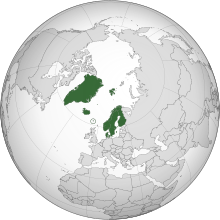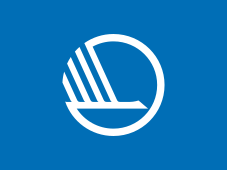Finland
Finland (Finnish: Suomi [ˈsuo̯mi] (![]()
![]()
![]()
Republic of Finland | |
|---|---|
.svg.png) 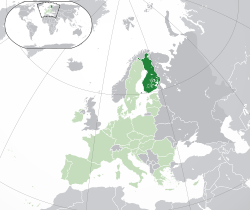 Location of Finland (dark green) – in Europe (green & dark grey) | |
| Capital and largest city | Helsinki 60°10′N 24°56′E |
| Official languages | Finnish • Swedish |
| Recognised regional languages | Sámi |
| Religion |
|
| Demonym(s) | |
| Government | Unitary parliamentary republic[1] |
| Sauli Niinistö | |
| Sanna Marin | |
| Legislature | Eduskunta/Riksdagen |
| Formation | |
| 29 March 1809 | |
| 6 December 1917 | |
| Jan – May 1918 | |
| 1 January 1995 | |
| Area | |
• Total | 338,424 km2 (130,666 sq mi) (64th) |
• Water (%) | 10 |
| Population | |
• May 2020 estimate | |
• Density | 16/km2 (41.4/sq mi) (213th) |
| GDP (PPP) | 2018 estimate |
• Total | $257 billion[3] (60th) |
• Per capita | $46,559[3] (24th) |
| GDP (nominal) | 2018 estimate |
• Total | $277 billion[3] (43rd) |
• Per capita | $50,068[3] (14th) |
| Gini (2019) | low · 6th |
| HDI (2018) | very high · 12th |
| Currency | Euro (€) (EUR) |
| Time zone | UTC+2 (EET) |
| UTC+3 (EEST) | |
| Date format | d.m.yyyy[6] |
| Driving side | right |
| Calling code | +358 |
| ISO 3166 code | FI |
| Internet TLD | .fia |
| |
Finland was first inhabited around the end of the most recent ice age, approximately around 9000 BC.[7] The Comb Ceramic culture introduced pottery in 5200 BC and the Corded Ware culture coincided with the start of agriculture between 3000 and 2500 BC. The Bronze Age and Iron Age were characterised by extensive contacts with other cultures in Fennoscandia and the Baltic region. At the time Finland had three main cultural areas – Southwest Finland, Tavastia and Karelia.[8] From the late 13th century, Finland gradually became an integral part of Sweden as a consequence of the Northern Crusades and the Swedish colonisation of coastal Finland, an event, the legacy of which is reflected in the prevalence of the Swedish language and its official status.
In 1809, Finland was annexed by the Russian Empire as the autonomous Grand Duchy of Finland. In 1906, Finland became the first European state to grant all adult citizens the right to vote, and the first in the world to give all adult citizens the right to run for public office.[9][10] Following the 1917 Russian Revolution, Finland declared itself independent from the empire. In 1918, the fledgling state was divided by the Finnish Civil War, with the Bolshevik-leaning Red Guards, supported by the Russian Soviet Federative Socialist Republic, fighting against the White Guard, supported by the German Empire. After a brief attempt to establish a kingdom, the country became a republic. During World War II, Finland fought the Soviet Union in the Winter War and the Continuation War, and lost part of its territory, but maintained independence.
Finland largely remained an agrarian country until the 1950s. After World War II, war reparations demanded by the Soviet Union, amounting to $300 million (5,449 million in 2018) forced Finland to industrialise. The country rapidly developed an advanced economy, while building an extensive welfare state based on the Nordic model, resulting in widespread prosperity and a high per capita income.[11] Finland is a top performer in numerous metrics of national performance, including education, economic competitiveness, civil liberties, quality of life, and human development.[12][13][14][15] In 2015, Finland was ranked first in the World Human Capital[16] and the Press Freedom Index and as the most stable country in the world during 2011–2016 in the Fragile States Index,[17] and second in the Global Gender Gap Report.[18] It also ranked first on the World Happiness Report report for 2018, 2019 and 2020.[19][20]
Finland joined the United Nations in 1955 and adopted an official policy of neutrality. The Finno-Soviet Treaty of 1948 gave the Soviet Union some leverage in Finnish domestic politics during the Cold War. Finland joined the OECD in 1969, the NATO Partnership for Peace in 1994,[21] the European Union in 1995, the Euro-Atlantic Partnership Council in 1997,[21] and the Eurozone at its inception in 1999.
Finland has a population of approximately 5.5 million, making it the 25th-most populous country in Europe. The majority of its population live in the central and south of the country and speak Finnish, a Finnic language of the Uralic language family, which is unrelated to the Scandinavian languages.[22] Swedish is the second official language of Finland, and is mainly spoken in certain coastal areas of the country and on Åland. Finland is the eighth-largest country in Europe in terms of area, and the most sparsely populated country in the European Union. It is a parliamentary republic consisting of 310 municipalities,[23] and includes an autonomous region, the Åland Islands. Over 1.4 million people live in the Greater Helsinki metropolitan area, which produces a third of the country's GDP. A large majority of Finns are members of the Evangelical Lutheran Church.[24]
Etymology
Finland
The earliest written appearance of the name Finland is thought to be on three runestones. Two were found in the Swedish province of Uppland and have the inscription finlonti (U 582). The third was found in Gotland. It has the inscription finlandi (G 319) and dates back to the 13th century.[25] The name can be assumed to be related to the tribe name Finns, which is mentioned at first known time AD 98 (disputed meaning).
Suomi
The name Suomi (Finnish for 'Finland') has uncertain origins, but a candidate for a source is the Proto-Baltic word *źemē, meaning "land". In addition to the close relatives of Finnish (the Finnic languages), this name is also used in the Baltic languages Latvian and Lithuanian. Alternatively, the Indo-European word *gʰm-on "man" (cf. Gothic guma, Latin homo) has been suggested, being borrowed as *ćoma. Earlier theories suggested derivation from suomaa (fen land) or suoniemi (fen cape), but these are now considered outdated. Some have suggested common etymology with saame (Sami, a Finno-Ugric people in Lapland) and Häme (a province in the inland), but that theory is uncertain.[26]
The earliest attested use of word Suomi is in 811 in the Royal Frankish Annals where it is used as a person name connected to a peace treaty.[27][28]
Concept
In the earliest historical sources, from the 12th and 13th centuries, the term Finland refers to the coastal region around Turku from Perniö to Uusikaupunki. This region later became known as Finland Proper in distinction from the country name Finland. Finland became a common name for the whole country in a centuries-long process that started when the Catholic Church established a missionary diocese in Nousiainen in the northern part of the province of Suomi possibly sometime in the 12th century.[29]
The devastation of Finland during the Great Northern War (1714–1721) and during the Russo-Swedish War (1741–1743) caused Sweden to begin carrying out major efforts to defend its eastern half from Russia. These 18th-century experiences created a sense of a shared destiny that when put in conjunction with the unique Finnish language, led to the adoption of an expanded concept of Finland.[30]
History
Prehistory
If the archeological finds from Wolf Cave are the result of Neanderthals' activities, the first people inhabited Finland approximately 120,000–130,000 years ago.[31] The area that is now Finland was settled in, at the latest, around 8,500 BC during the Stone Age towards the end of the last glacial period. The artifacts the first settlers left behind present characteristics that are shared with those found in Estonia, Russia, and Norway.[32] The earliest people were hunter-gatherers, using stone tools.[33]
The first pottery appeared in 5200 BC, when the Comb Ceramic culture was introduced.[34] The arrival of the Corded Ware culture in Southern coastal Finland between 3000 and 2500 BC may have coincided with the start of agriculture.[35] Even with the introduction of agriculture, hunting and fishing continued to be important parts of the subsistence economy.
In the Bronze Age permanent all-year-round cultivation and animal husbandry spread, but the cold climate phase slowed the change.[36] Cultures in Finland shared common features in pottery and also axes had similarities but local features existed. Seima-Turbino-phenomenon brought first bronze artifacts to the region and possibly also the Finno-Ugric-Languages.[36][37] Commercial contacts that had so far mostly been to Estonia started to extend to Scandinavia. Domestic manufacture of bronze artifacts started 1300 BC with Maaninka-type bronze axes. Bronze was imported from Volga region and from Southern Scandinavia.[38]
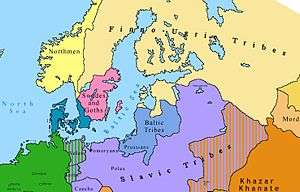
In the Iron Age population grew especially in Häme and Savo regions. Finland proper was the most densely populated area. Cultural contacts to the Baltics and Scandinavia became more frequent. Commercial contacts in the Baltic Sea region grew and extended during the 8th and 9th centuries.
Main exports from Finland were furs, slaves, castoreum, and falcons to European courts. Imports included silk and other fabrics, jewelry, Ulfberht swords, and, in lesser extent, glass. Production of iron started approximately in 500 BC.[39]
At the end of the 9th century, indigenous artifact culture, especially women's jewelry and weapons, had more common local features than ever before. This has been interpreted to be expressing common Finnish identity which was born from an image of common origin.[40]
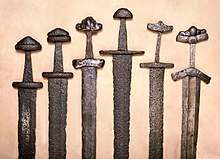
An early form of Finnic languages spread to the Baltic Sea region approximately 1900 BC with the Seima-Turbino-phenomenon. Common Finnic language was spoken around Gulf of Finland 2000 years ago. The dialects from which the modern-day Finnish language was developed came into existence during the Iron Age.[41] Although distantly related, the Sami retained the hunter-gatherer lifestyle longer than the Finns. The Sami cultural identity and the Sami language have survived in Lapland, the northernmost province, but the Sami have been displaced or assimilated elsewhere.
The 12th and 13th centuries were a violent time in the northern Baltic Sea. The Livonian Crusade was ongoing and the Finnish tribes such as the Tavastians and Karelians were in frequent conflicts with Novgorod and with each other. Also, during the 12th and 13th centuries several crusades from the Catholic realms of the Baltic Sea area were made against the Finnish tribes. According to historical sources, Danes waged two crusades on Finland, in 1191 and in 1202,[42] and Swedes, possibly the so-called second crusade to Finland, in 1249 against Tavastians and the third crusade to Finland in 1293 against the Karelians. The so-called first crusade to Finland, possibly in 1155, is most likely an unreal event. Also, it is possible that Germans made violent conversion of Finnish pagans in the 13th century.[43] According to a papal letter from 1241, the king of Norway was also fighting against "nearby pagans" at that time.[44]
Swedish era
_en2.png)
Dark green: Sweden proper, as represented in the Riksdag of the Estates. Other greens: Swedish dominions and possessions
As a result of the crusades and the colonisation of some Finnish coastal areas with Christian Swedish population during the Middle Ages,[45] Finland gradually became part of the kingdom of Sweden and the sphere of influence of the Catholic Church. Due to the Swedish conquest, the Finnish upper class lost its position and lands to the new Swedish and German nobility and to the Catholic Church.[46] In Sweden even in the 17th and 18th centuries, it was clear that Finland was a conquered country and its inhabitants could be treated arbitrarily. Swedish kings visited Finland rarely and in Swedish contemporary texts Finns were portrayed to be primitive and their language inferior.[47]
Swedish became the dominant language of the nobility, administration, and education; Finnish was chiefly a language for the peasantry, clergy, and local courts in predominantly Finnish-speaking areas. During the Protestant Reformation, the Finns gradually converted to Lutheranism.[48]
In the 16th century, Mikael Agricola published the first written works in Finnish. The first university in Finland, the Royal Academy of Turku, was established in 1640. Finland suffered a severe famine in 1696–1697, during which about one third of the Finnish population died,[49] and a devastating plague a few years later.

In the 18th century, wars between Sweden and Russia twice led to the occupation of Finland by Russian forces, times known to the Finns as the Greater Wrath (1714–1721) and the Lesser Wrath (1742–1743).[49] It is estimated that almost an entire generation of young men was lost during the Great Wrath, due mainly to the destruction of homes and farms, and to the burning of Helsinki. By this time Finland was the predominant term for the whole area from the Gulf of Bothnia to the Russian border.
Two Russo-Swedish wars in twenty-five years served as reminders to the Finnish people of the precarious position between Sweden and Russia. An increasingly vocal elite in Finland soon determined that Finnish ties with Sweden were becoming too costly, and following Russo-Swedish War (1788–1790), the Finnish elite's desire to break with Sweden only heightened.[51]
Even before the war there were conspiring politicians, among them Col G. M. Sprengtporten, who had supported Gustav III's coup in 1772. Sprengporten fell out with the king and resigned his commission in 1777. In the following decade he tried to secure Russian support for an autonomous Finland, and later became an adviser to Catherine II.[51] In the spirit of the notion of Adolf Ivar Arwidsson (1791–1858), "we are not Swedes, we do not want to become Russians, let us therefore be Finns", the Finnish national identity started to become established.
Notwithstanding the efforts of Finland's elite and nobility to break ties with Sweden, there was no genuine independence movement in Finland until the early 20th century. As a matter of fact, at this time the Finnish peasantry was outraged by the actions of their elite and almost exclusively supported Gustav's actions against the conspirators. (The High Court of Turku condemned Sprengtporten as a traitor c. 1793.)[51] The Swedish era ended in the Finnish War in 1809.
Russian Empire era
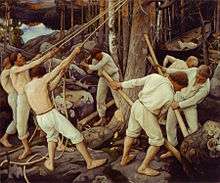
On 29 March 1809, having been taken over by the armies of Alexander I of Russia in the Finnish War, Finland became an autonomous Grand Duchy in the Russian Empire until the end of 1917. In 1811, Alexander I incorporated the Russian Vyborg province into the Grand Duchy of Finland. During the Russian era, the Finnish language began to gain recognition. From the 1860s onwards, a strong Finnish nationalist movement known as the Fennoman movement grew. Milestones included the publication of what would become Finland's national epic – the Kalevala – in 1835, and the Finnish language's achieving equal legal status with Swedish in 1892.
The Finnish famine of 1866–1868 killed 15% of the population, making it one of the worst famines in European history. The famine led the Russian Empire to ease financial regulations, and investment rose in following decades. Economic and political development was rapid.[53] The gross domestic product (GDP) per capita was still half of that of the United States and a third of that of Britain.[53]
In 1906, universal suffrage was adopted in the Grand Duchy of Finland. However, the relationship between the Grand Duchy and the Russian Empire soured when the Russian government made moves to restrict Finnish autonomy. For example, the universal suffrage was, in practice, virtually meaningless, since the tsar did not have to approve any of the laws adopted by the Finnish parliament. Desire for independence gained ground, first among radical liberals[54] and socialists.
Civil war and early independence
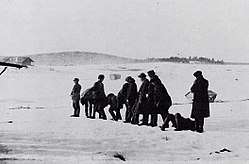
After the 1917 February Revolution, the position of Finland as part of the Russian Empire was questioned, mainly by Social Democrats. Since the head of state was the tsar of Russia, it was not clear who the chief executive of Finland was after the revolution. The Parliament, controlled by social democrats, passed the so-called Power Act to give the highest authority to the Parliament. This was rejected by the Russian Provisional Government which decided to dissolve the Parliament.[55]
New elections were conducted, in which right-wing parties won with a slim majority. Some social democrats refused to accept the result and still claimed that the dissolution of the parliament (and thus the ensuing elections) were extralegal. The two nearly equally powerful political blocs, the right-wing parties and the social democratic party, were highly antagonized.
The October Revolution in Russia changed the geopolitical situation anew. Suddenly, the right-wing parties in Finland started to reconsider their decision to block the transfer of highest executive power from the Russian government to Finland, as the Bolsheviks took power in Russia. Rather than acknowledge the authority of the Power Act of a few months earlier, the right-wing government declared independence on 6 December 1917.
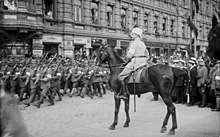
On 27 January 1918, the official opening shots of the war were fired in two simultaneous events. The government started to disarm the Russian forces in Pohjanmaa, and the Social Democratic Party staged a coup. The latter gained control of southern Finland and Helsinki, but the white government continued in exile from Vaasa. This sparked the brief but bitter civil war. The Whites, who were supported by Imperial Germany, prevailed over the Reds.[56] After the war, tens of thousands of Reds and suspected sympathizers were interned in camps, where thousands died by execution or from malnutrition and disease. Deep social and political enmity was sown between the Reds and Whites and would last until the Winter War and beyond. The civil war and activist expeditions into Soviet Russia strained Eastern relations.
After a brief experimentation with monarchy, Finland became a presidential republic, with Kaarlo Juho Ståhlberg elected as its first president in 1919. The Finnish–Russian border was determined by the Treaty of Tartu in 1920, largely following the historic border but granting Pechenga (Finnish: Petsamo) and its Barents Sea harbour to Finland. Finnish democracy did not see any Soviet coup attempts and survived the anti-Communist Lapua Movement. The relationship between Finland and the Soviet Union was tense. Army officers were trained in France, and relations with Western Europe and Sweden were strengthened.
In 1917, the population was 3 million. Credit-based land reform was enacted after the civil war, increasing the proportion of capital-owning population.[53] About 70% of workers were occupied in agriculture and 10% in industry.[57] The largest export markets were the United Kingdom and Germany.
World War II and after
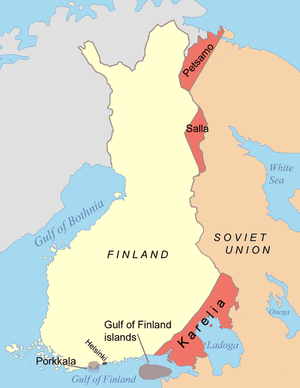
Finland fought the Soviet Union in the Winter War of 1939–1940 after the Soviet Union attacked Finland and in the Continuation War of 1941–1944, following Operation Barbarossa, when Finland aligned with Germany following Germany's invasion of the Soviet Union. For 872 days, the German army, aided indirectly by Finnish forces, besieged Leningrad, the USSR's second-largest city.[58] After resisting a major Soviet offensive in June/July 1944 led to a standstill, Finland reached an armistice with the Soviet Union. This was followed by the Lapland War of 1944–1945, when Finland fought retreating German forces in northern Finland.
The treaties signed in 1947 and 1948 with the Soviet Union included Finnish obligations, restraints, and reparations—as well as further Finnish territorial concessions in addition to those in the Moscow Peace Treaty of 1940. As a result of the two wars, Finland ceded most of Finnish Karelia, Salla, and Petsamo, which amounted to 10% of its land area and 20% of its industrial capacity, including the ports of Vyborg (Viipuri) and the ice-free Liinakhamari (Liinahamari). Almost the whole population, some 400,000 people, fled these areas. The former Finnish territory now constitutes part of Russia's Republic of Karelia. Finland was never occupied by Soviet forces and it retained its independence, but at a loss of about 93,000 soldiers.
Finland rejected Marshall aid, in apparent deference to Soviet desires. However, the United States provided secret development aid and helped the Social Democratic Party, in hopes of preserving Finland's independence.[59] Establishing trade with the Western powers, such as the United Kingdom, and paying reparations to the Soviet Union produced a transformation of Finland from a primarily agrarian economy to an industrialised one. Valmet was founded to create materials for war reparations. After the reparations had been paid off, Finland continued to trade with the Soviet Union in the framework of bilateral trade.
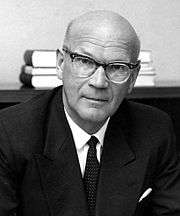
In 1950, 46% of Finnish workers worked in agriculture and a third lived in urban areas.[60] The new jobs in manufacturing, services, and trade quickly attracted people to the towns. The average number of births per woman declined from a baby boom peak of 3.5 in 1947 to 1.5 in 1973.[60] When baby-boomers entered the workforce, the economy did not generate jobs quickly enough, and hundreds of thousands emigrated to the more industrialized Sweden, with emigration peaking in 1969 and 1970.[60] The 1952 Summer Olympics brought international visitors. Finland took part in trade liberalization in the World Bank, the International Monetary Fund and the General Agreement on Tariffs and Trade.
Officially claiming to be neutral, Finland lay in the grey zone between the Western countries and the Soviet Union. The YYA Treaty (Finno-Soviet Pact of Friendship, Cooperation and Mutual Assistance) gave the Soviet Union some leverage in Finnish domestic politics. This was extensively exploited by president Urho Kekkonen against his opponents. He maintained an effective monopoly on Soviet relations from 1956 on, which was crucial for his continued popularity. In politics, there was a tendency of avoiding any policies and statements that could be interpreted as anti-Soviet. This phenomenon was given the name "Finlandization" by the West German press.
Despite close relations with the Soviet Union, Finland maintained a market economy. Various industries benefited from trade privileges with the Soviets, which explains the widespread support that pro-Soviet policies enjoyed among business interests in Finland. Economic growth was rapid in the postwar era, and by 1975 Finland's GDP per capita was the 15th-highest in the world. In the 1970s and '80s, Finland built one of the most extensive welfare states in the world. Finland negotiated with the European Economic Community (EEC, a predecessor of the European Union) a treaty that mostly abolished customs duties towards the EEC starting from 1977, although Finland did not fully join. In 1981, President Urho Kekkonen's failing health forced him to retire after holding office for 25 years.
.jpg)
Finland reacted cautiously to the collapse of the Soviet Union, but swiftly began increasing integration with the West. On 21 September 1990, Finland unilaterally declared the Paris Peace Treaty obsolete, following the German reunification decision nine days earlier.[61]
Miscalculated macroeconomic decisions, a banking crisis, the collapse of its largest trading partner (the Soviet Union), and a global economic downturn caused a deep early 1990s recession in Finland. The depression bottomed out in 1993, and Finland saw steady economic growth for more than ten years.[62] Like other Nordic countries, Finland decentralised its economy since the late 1980s. Financial and product market regulation were loosened. Some state enterprises have been privatized and there have been some modest tax cuts. Finland joined the European Union in 1995, and the Eurozone in 1999. Much of the late 1990s economic growth was fueled by the success of the mobile phone manufacturer Nokia, which held a unique position of representing 80% of the market capitalization of the Helsinki Stock Exchange.
Geography
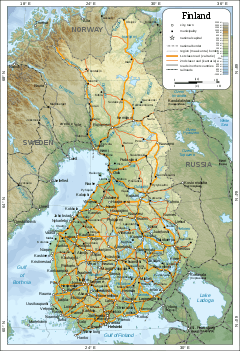
Lying approximately between latitudes 60° and 70° N, and longitudes 20° and 32° E, Finland is one of the world's northernmost countries. Of world capitals, only Reykjavík lies more to the north than Helsinki. The distance from the southernmost point – Hanko in Uusimaa – to the northernmost – Nuorgam in Lapland – is 1,160 kilometres (720 mi).
Finland has about 168,000 lakes (of area larger than 500 m2 or 0.12 acres) and 179,000 islands.[63] Its largest lake, Saimaa, is the fourth largest in Europe. The Finnish Lakeland is the area with the most lakes in the country. The greatest concentration of islands is found in the southwest, in the Archipelago Sea between continental Finland and the main island of Åland.
Much of the geography of Finland is a result of the Ice Age. The glaciers were thicker and lasted longer in Fennoscandia compared with the rest of Europe. Their eroding effects have left the Finnish landscape mostly flat with few hills and fewer mountains. Its highest point, the Halti at 1,324 metres (4,344 ft), is found in the extreme north of Lapland at the border between Finland and Norway. The highest mountain whose peak is entirely in Finland is Ridnitšohkka at 1,316 m (4,318 ft), directly adjacent to Halti.
The retreating glaciers have left the land with morainic deposits in formations of eskers. These are ridges of stratified gravel and sand, running northwest to southeast, where the ancient edge of the glacier once lay. Among the biggest of these are the three Salpausselkä ridges that run across southern Finland.
Having been compressed under the enormous weight of the glaciers, terrain in Finland is rising due to the post-glacial rebound. The effect is strongest around the Gulf of Bothnia, where land steadily rises about 1 cm (0.4 in) a year. As a result, the old sea bottom turns little by little into dry land: the surface area of the country is expanding by about 7 square kilometres (2.7 sq mi) annually.[64] Relatively speaking, Finland is rising from the sea.[65]
The landscape is covered mostly by coniferous taiga forests and fens, with little cultivated land. Of the total area 10% is lakes, rivers and ponds, and 78% forest. The forest consists of pine, spruce, birch, and other species.[66] Finland is the largest producer of wood in Europe and among the largest in the world. The most common type of rock is granite. It is a ubiquitous part of the scenery, visible wherever there is no soil cover. Moraine or till is the most common type of soil, covered by a thin layer of humus of biological origin. Podzol profile development is seen in most forest soils except where drainage is poor. Gleysols and peat bogs occupy poorly drained areas.
Biodiversity
Phytogeographically, Finland is shared between the Arctic, central European, and northern European provinces of the Circumboreal Region within the Boreal Kingdom. According to the WWF, the territory of Finland can be subdivided into three ecoregions: the Scandinavian and Russian taiga, Sarmatic mixed forests, and Scandinavian Montane Birch forest and grasslands. Taiga covers most of Finland from northern regions of southern provinces to the north of Lapland. On the southwestern coast, south of the Helsinki-Rauma line, forests are characterized by mixed forests, that are more typical in the Baltic region. In the extreme north of Finland, near the tree line and Arctic Ocean, Montane Birch forests are common.
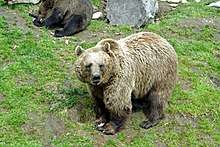
Similarly, Finland has a diverse and extensive range of fauna. There are at least sixty native mammalian species, 248 breeding bird species, over 70 fish species, and 11 reptile and frog species present today, many migrating from neighboring countries thousands of years ago. Large and widely recognized wildlife mammals found in Finland are the brown bear (the national animal), gray wolf, wolverine, and elk. Three of the more striking birds are the whooper swan, a large European swan and the national bird of Finland; the Western capercaillie, a large, black-plumaged member of the grouse family; and the Eurasian eagle-owl. The latter is considered an indicator of old-growth forest connectivity, and has been declining because of landscape fragmentation.[67] The most common breeding birds are the willow warbler, common chaffinch, and redwing.[68] Of some seventy species of freshwater fish, the northern pike, perch, and others are plentiful. Atlantic salmon remains the favourite of fly rod enthusiasts.
The endangered Saimaa ringed seal, one of only three lake seal species in the world, exists only in the Saimaa lake system of southeastern Finland, down to only 390 seals today.[69] It has become the emblem of the Finnish Association for Nature Conservation.[70]
Climate
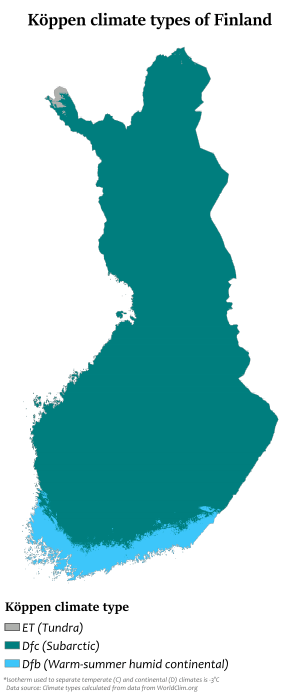
The main factor influencing Finland's climate is the country's geographical position between the 60th and 70th northern parallels in the Eurasian continent's coastal zone. In the Köppen climate classification, the whole of Finland lies in the boreal zone, characterized by warm summers and freezing winters. Within the country, the temperateness varies considerably between the southern coastal regions and the extreme north, showing characteristics of both a maritime and a continental climate. Finland is near enough to the Atlantic Ocean to be continuously warmed by the Gulf Stream. The Gulf Stream combines with the moderating effects of the Baltic Sea and numerous inland lakes to explain the unusually warm climate compared with other regions that share the same latitude, such as Alaska, Siberia, and southern Greenland.[71]
Winters in southern Finland (when mean daily temperature remains below 0 °C or 32 °F) are usually about 100 days long, and in the inland the snow typically covers the land from about late November to April, and on the coastal areas such as Helsinki, snow often covers the land from late December to late March.[72] Even in the south, the harshest winter nights can see the temperatures fall to −30 °C (−22 °F) although on coastal areas like Helsinki, temperatures below −30 °C (−22 °F) are rare. Climatic summers (when mean daily temperature remains above 10 °C or 50 °F) in southern Finland last from about late May to mid-September, and in the inland, the warmest days of July can reach over 35 °C (95 °F).[71] Although most of Finland lies on the taiga belt, the southernmost coastal regions are sometimes classified as hemiboreal.[73]
In northern Finland, particularly in Lapland, the winters are long and cold, while the summers are relatively warm but short. The most severe winter days in Lapland can see the temperature fall down to −45 °C (−49 °F). The winter of the north lasts for about 200 days with permanent snow cover from about mid-October to early May. Summers in the north are quite short, only two to three months, but can still see maximum daily temperatures above 25 °C (77 °F) during heat waves.[71] No part of Finland has Arctic tundra, but Alpine tundra can be found at the fells Lapland.[73]
The Finnish climate is suitable for cereal farming only in the southernmost regions, while the northern regions are suitable for animal husbandry.[74]
A quarter of Finland's territory lies within the Arctic Circle and the midnight sun can be experienced for more days the farther north one travels. At Finland's northernmost point, the sun does not set for 73 consecutive days during summer, and does not rise at all for 51 days during winter.[71]
Regions
Finland consists of 19 regions, called maakunta in Finnish and landskap in Swedish. The regions are governed by regional councils which serve as forums of cooperation for the municipalities of a region. The main tasks of the regions are regional planning and development of enterprise and education. In addition, the public health services are usually organized on the basis of regions. Currently, the only region where a popular election is held for the council is Kainuu. Other regional councils are elected by municipal councils, each municipality sending representatives in proportion to its population.
In addition to inter-municipal cooperation, which is the responsibility of regional councils, each region has a state Employment and Economic Development Centre which is responsible for the local administration of labour, agriculture, fisheries, forestry, and entrepreneurial affairs. The Finnish Defence Forces regional offices are responsible for the regional defence preparations and for the administration of conscription within the region.
Regions represent dialectal, cultural, and economic variations better than the former provinces, which were purely administrative divisions of the central government. Historically, regions are divisions of historical provinces of Finland, areas which represent dialects and culture more accurately.
Six Regional State Administrative Agencies were created by the state of Finland in 2010, each of them responsible for one of the regions called alue in Finnish and region in Swedish; in addition, Åland was designated a seventh region. These take over some of the tasks of the earlier Provinces of Finland (lääni/län), which were abolished.[75]
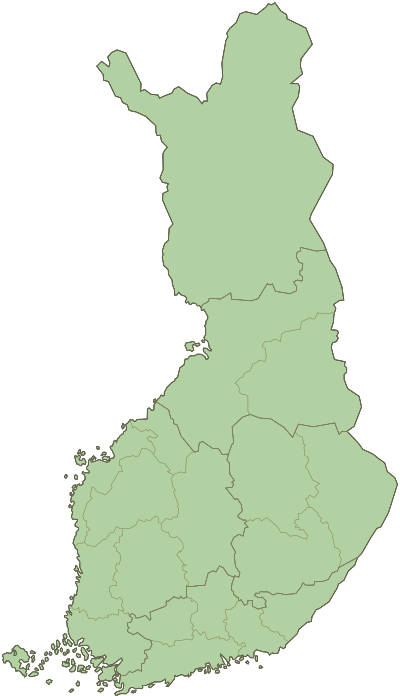 |
|
The region of Eastern Uusimaa (Itä-Uusimaa) was consolidated with Uusimaa on 1 January 2011.[78]
Administrative divisions
The fundamental administrative divisions of the country are the municipalities, which may also call themselves towns or cities. They account for half of public spending. Spending is financed by municipal income tax, state subsidies, and other revenue. As of 2020, there are 310 municipalities,[23] and most have fewer than 6,000 residents.
In addition to municipalities, two intermediate levels are defined. Municipalities co-operate in seventy sub-regions and nineteen regions. These are governed by the member municipalities and have only limited powers. The autonomous province of Åland has a permanent democratically elected regional council. Sami people have a semi-autonomous Sami native region in Lapland for issues on language and culture.
In the following chart, the number of inhabitants includes those living in the entire municipality (kunta/kommun), not just in the built-up area. The land area is given in km², and the density in inhabitants per km² (land area). The figures are as of 31 January 2019. The capital region – comprising Helsinki, Vantaa, Espoo and Kauniainen – forms a continuous conurbation of over 1.1 million people. However, common administration is limited to voluntary cooperation of all municipalities, e.g. in Helsinki Metropolitan Area Council.
| City | Population[79] | Land area[80] | Density | Regional map | Population density map |
|---|---|---|---|---|---|
| 650,058 | 213.75 | 3,041.21 |
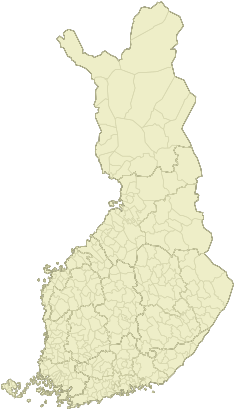 Municipalities (thin borders) and regions (thick borders) of Finland (2009) |
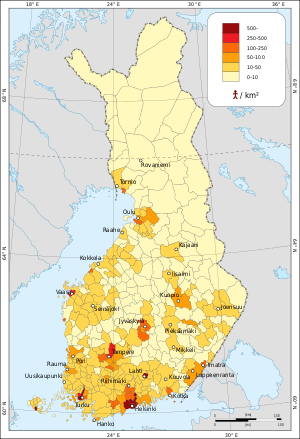 The population densities of Finnish municipalities | |
| 284,444 | 312.26 | 910.92 | |||
| 235,615 | 525.03 | 448.76 | |||
| 228,678 | 238.37 | 959.34 | |||
| 203,750 | 1,410.17 | 144.49 | |||
| 191,603 | 245.67 | 779.92 | |||
| 141,374 | 1,170.99 | 120.73 | |||
| 120,081 | 459.47 | 261.35 | |||
| 118,667 | 1,597.39 | 74.29 | |||
| 83,149 | 2,558.24 | 32.5 | |||
| 84,318 | 834.06 | 101.09 | |||
| 76,543 | 2,381.76 | 32.14 | |||
| 72,661 | 1,433.36 | 50.69 | |||
| 67,530 | 1,785.76 | 37.82 | |||
| 67,588 | 188.81 | 357.97 |
Politics

Constitution
The Constitution of Finland defines the political system; Finland is a parliamentary republic within the framework of a representative democracy. The Prime Minister is the country's most powerful person. The current version of the constitution was enacted on 1 March 2000, and was amended on 1 March 2012. Citizens can run and vote in parliamentary, municipal, presidential and European Union elections.
President
The head of state of Finland is President of the Republic of Finland (in Finnish: Suomen tasavallan presidentti; in Swedish: Republiken Finlands president). Finland has had for most of its independence a semi-presidential system, but in the last few decades the powers of the President have been diminished. In constitution amendments, which came into effect in 1991 or 1992 and also with a new drafted constitution of 2000, amended in 2012, the President's position has become primarily a ceremonial office. However, the President still leads the nation's foreign politics together with the Council of State and is the commander-in-chief of the Defence Forces.[1] The position still does entail some powers, including responsibility for foreign policy (excluding affairs related to the European Union) in cooperation with the cabinet, being the head of the armed forces, some decree and pardoning powers, and some appointive powers. Direct, one- or two-stage elections are used to elect the president for a term of six years and for a maximum of two consecutive terms. The current president is Sauli Niinistö; he took office on 1 March 2012. Former presidents were K. J. Ståhlberg (1919–1925), L. K. Relander (1925–1931), P. E. Svinhufvud (1931–1937), Kyösti Kallio (1937–1940), Risto Ryti (1940–1944), C. G. E. Mannerheim (1944–1946), J. K. Paasikivi (1946–1956), Urho Kekkonen (1956–1982), Mauno Koivisto (1982–1994), Martti Ahtisaari (1994–2000), and Tarja Halonen (2000–2012).
The current president was elected from the ranks of the National Coalition Party for the first time since 1946. The presidency between 1946 and the present was instead held by a member of the Social Democratic Party or the Centre Party.
Parliament
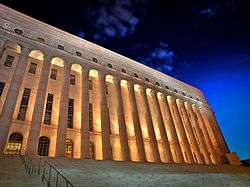
The 200-member unicameral Parliament of Finland (Finnish: Eduskunta, Swedish: Riksdag) exercises supreme legislative authority in the country. It may alter the constitution and ordinary laws, dismiss the cabinet, and override presidential vetoes. Its acts are not subject to judicial review; the constitutionality of new laws is assessed by the parliament's constitutional law committee. The parliament is elected for a term of four years using the proportional D'Hondt method within a number of multi-seat constituencies through the most open list multi-member districts. Various parliament committees listen to experts and prepare legislation. The speaker of the parliament is Anu Vehviläinen (Centre Party).[81]
Since universal suffrage was introduced in 1906, the parliament has been dominated by the Centre Party (former Agrarian Union), the National Coalition Party, and the Social Democrats. These parties have enjoyed approximately equal support, and their combined vote has totalled about 65–80% of all votes. Their lowest common total of MPs, 121, was reached in the 2011 elections. For a few decades after 1944, the Communists were a strong fourth party. Due to the electoral system of proportional representation, and the relative reluctance of voters to switch their support between parties, the relative strengths of the parties have commonly varied only slightly from one election to another. However, there have been some long-term trends, such as the rise and fall of the Communists during the Cold War; the steady decline into insignificance of the Liberals and its predecessors from 1906 to 1980; and the rise of the Green League since 1983. In the 2011 elections, the Finns Party achieved exceptional success, increasing its representation from 5 to 39 seats, surpassing the Centre Party.[82]
The autonomous province of Åland, which forms a federacy with Finland, elects one member to the parliament, who traditionally joins the parliamentary group of the Swedish People's Party of Finland. (The province also holds elections for its own permanent regional council, and in the 2011 elections, Åland Centre was the largest party.)
The Parliament can be dissolved by a recommendation of the Prime Minister, endorsed by the President. This procedure has never been used, although the parliament was dissolved eight times under the pre-2000 constitution, when this action was the sole prerogative of the president.
After the parliamentary elections on 19 April 2015, the seats were divided among eight parties as follows:[83]
| Party | Seats | Net gain/loss | % of seats | % of votes |
|---|---|---|---|---|
| Centre Party | 49 | +14 | 24.5 | 21.1 |
| Finns Party | 38 | −1 | 19.0 | 17.7 |
| National Coalition Party | 37 | −7 | 18.5 | 18.2 |
| Social Democratic Party | 34 | −8 | 17.0 | 16.5 |
| Green League | 15 | +5 | 7.5 | 8.5 |
| Left Alliance | 12 | −2 | 6.0 | 7.1 |
| Swedish People's Party | 9 | 0 | 4.5 | 4.9 |
| Christian Democrats | 5 | −1 | 2.5 | 3.5 |
| Others | 1a | 0 | 0.5 | 0.6 |
| a Province of Åland's representative. | ||||
Cabinet
After parliamentary elections, the parties negotiate among themselves on forming a new cabinet (the Finnish Government), which then has to be approved by a simple majority vote in the parliament. The cabinet can be dismissed by a parliamentary vote of no confidence, although this rarely happens (the last time in 1957), as the parties represented in the cabinet usually make up a majority in the parliament.[84]
The cabinet exercises most executive powers, and originates most of the bills that the parliament then debates and votes on. It is headed by the Prime Minister of Finland, and consists of him or her, of other ministers, and of the Chancellor of Justice. The current prime minister is Sanna Marin (Social Democratic Party). Each minister heads his or her ministry, or, in some cases, has responsibility for a subset of a ministry's policy. After the prime minister, the most powerful minister is the minister of finance. The incumbent Minister of Finance is Katri Kulmuni.
As no one party ever dominates the parliament, Finnish cabinets are multi-party coalitions. As a rule, the post of prime minister goes to the leader of the biggest party and that of the minister of finance to the leader of the second biggest.
Law
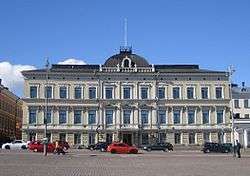
The judicial system of Finland is a civil law system divided between courts with regular civil and criminal jurisdiction and administrative courts with jurisdiction over litigation between individuals and the public administration. Finnish law is codified and based on Swedish law and in a wider sense, civil law or Roman law. The court system for civil and criminal jurisdiction consists of local courts (käräjäoikeus, tingsrätt), regional appellate courts (hovioikeus, hovrätt), and the Supreme Court (korkein oikeus, högsta domstolen). The administrative branch of justice consists of administrative courts (hallinto-oikeus, förvaltningsdomstol) and the Supreme Administrative Court (korkein hallinto-oikeus, högsta förvaltningsdomstolen). In addition to the regular courts, there are a few special courts in certain branches of administration. There is also a High Court of Impeachment for criminal charges against certain high-ranking officeholders.
Around 92% of residents have confidence in Finland's security institutions.[85] The overall crime rate of Finland is not high in the EU context. Some crime types are above average, notably the high homicide rate for Western Europe.[86] A day fine system is in effect and also applied to offenses such as speeding.
Finland has successfully fought against government corruption, which was more common in the 1970s and '80s.[87] For instance, economic reforms and EU membership introduced stricter requirements for open bidding and many public monopolies were abolished.[87] Today, Finland has a very low number of corruption charges; Transparency International ranks Finland as one of the least corrupt countries in Europe.
In 2008, Transparency International criticized the lack of transparency of the system of Finnish political finance.[88] According to GRECO in 2007, corruption should be taken into account in the Finnish system of election funds better.[89] A scandal revolving around campaign finance of the 2007 parliamentary elections broke out in spring 2008. Nine Ministers of Government submitted incomplete funding reports and even more of the members of parliament. The law includes no punishment of false funds reports of the elected politicians.
Foreign relations
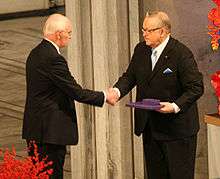
According to the 2012 constitution, the president (currently Sauli Niinistö) leads foreign policy in cooperation with the government, except that the president has no role in EU affairs.[90]
In 2008, president Martti Ahtisaari was awarded the Nobel Peace Prize.[91] Finland was considered a cooperative model state, and Finland did not oppose proposals for a common EU defence policy.[92] This was reversed in the 2000s, when Tarja Halonen and Erkki Tuomioja made Finland's official policy to resist other EU members' plans for common defence.[92]
Social security
Finland has one of the world's most extensive welfare systems, one that guarantees decent living conditions for all residents: Finns, and non-citizens. Since the 1980s the social security has been cut back, but still the system is one of the most comprehensive in the world. Created almost entirely during the first three decades after World War II, the social security system was an outgrowth of the traditional Nordic belief that the state was not inherently hostile to the well-being of its citizens, but could intervene benevolently on their behalf. According to some social historians, the basis of this belief was a relatively benign history that had allowed the gradual emergence of a free and independent peasantry in the Nordic countries and had curtailed the dominance of the nobility and the subsequent formation of a powerful right wing. Finland's history has been harsher than the histories of the other Nordic countries, but not harsh enough to bar the country from following their path of social development.[93]
Military
The Finnish Defence Forces consist of a cadre of professional soldiers (mainly officers and technical personnel), currently serving conscripts, and a large reserve. The standard readiness strength is 34,700 people in uniform, of which 25% are professional soldiers. A universal male conscription is in place, under which all male Finnish nationals above 18 years of age serve for 6 to 12 months of armed service or 12 months of civilian (non-armed) service. Voluntary post-conscription overseas peacekeeping service is popular, and troops serve around the world in UN, NATO, and EU missions. Approximately 500 women choose voluntary military service every year.[94] Women are allowed to serve in all combat arms including front-line infantry and special forces. The army consists of a highly mobile field army backed up by local defence units. The army defends the national territory and its military strategy employs the use of the heavily forested terrain and numerous lakes to wear down an aggressor, instead of attempting to hold the attacking army on the frontier.
Finnish defence expenditure per capita is one of the highest in the European Union.[95] The Finnish military doctrine is based on the concept of total defence. The term total means that all sectors of the government and economy are involved in the defence planning. The armed forces are under the command of the Chief of Defence (currently General Jarmo Lindberg), who is directly subordinate to the president in matters related to military command. The branches of the military are the army, the navy, and the air force. The border guard is under the Ministry of the Interior but can be incorporated into the Defence Forces when required for defence readiness.
Even while Finland hasn't joined the North Atlantic Treaty Organization, the country has joined the NATO Response Force, the EU Battlegroup,[96] the NATO Partnership for Peace and in 2014 signed a NATO memorandum of understanding,[97][98] thus forming a practical coalition.[21] In 2015, the Finland-NATO ties were strengthened with a host nation support agreement allowing assistance from NATO troops in emergency situations.[99] Finland has been an active participant in the Afghanistan and Kosovo.[100][101] Recently Finland has been more eager to discuss about its current and planned roles in Syria, Iraq and war against ISIL.[102] On 21 December 2012 Finnish military officer Atte Kaleva was reported to have been kidnapped and later released in Yemen for ransom. At first he was reported be a casual Arabic student, however only later it was published that his studies were about jihadists, terrorism, and that he was employed by the military.[103][104] As response to French request for solidarity, Finnish defence minister commented in November that Finland could and is willing to offer intelligence support.[105]
In May 2015, Finnish Military sent nearly one million letters to all relevant males in the country, informing them about their roles in the war effort. It was globally speculated that Finland was preparing for war—however Finland claimed that this was a standard procedure, yet something never done before in Finnish history.[106] Assistant chief of staff Hannu Hyppönen however said that this is not an isolated case, but bound to the European security dilemma.[106] The NATO Memorandum of Understanding signed earlier bestows an obligation e.g. to report on internal capabilities and the availability thereof to NATO.[98]
Economy
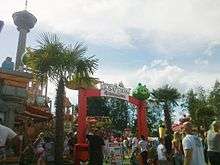
The economy of Finland has a per capita output equal to that of other European economies such as those of France, Germany, Belgium, or the UK. The largest sector of the economy is the service sector at 66% of GDP, followed by manufacturing and refining at 31%. Primary production represents 2.9%.[107] With respect to foreign trade, the key economic sector is manufacturing. The largest industries in 2007[108] were electronics (22%); machinery, vehicles, and other engineered metal products (21.1%); forest industry (13%); and chemicals (11%). The gross domestic product peaked in 2008. As of 2015, the country's economy is at the 2006 level.[109][110]
Finland has significant timber, mineral (iron, chromium, copper, nickel, and gold), and freshwater resources. Forestry, paper factories, and the agricultural sector (on which taxpayers spend around €3 billion annually) are important for rural residents so any policy changes affecting these sectors are politically sensitive for politicians dependent on rural votes. The Greater Helsinki area generates around one third of Finland's GDP. In a 2004 OECD comparison, high-technology manufacturing in Finland ranked second largest after Ireland. Knowledge-intensive services have also resulted in the smallest and slow-growth sectors – especially agriculture and low-technology manufacturing – being ranked the second largest after Ireland.[111] The overall short-term outlook was good and GDP growth has been above that of many EU peers.
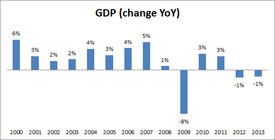
Finland is highly integrated into the global economy, and international trade produces one third of GDP. Trade with the European Union makes up 60% of Finland's total trade. The largest trade flows are with Germany, Russia, Sweden, the United Kingdom, the United States, the Netherlands, and China. Trade policy is managed by the European Union, where Finland has traditionally been among the free trade supporters, except for agricultural policy.[112] Finland is the only Nordic country to have joined the Eurozone.
Finland's climate and soils make growing crops a particular challenge. The country lies between the latitudes 60°N and 70°N, and it has severe winters and relatively short growing seasons that are sometimes interrupted by frost. However, because the Gulf Stream and the North Atlantic Drift Current moderate the climate, Finland contains half of the world's arable land north of 60° north latitude. Annual precipitation is usually sufficient, but it occurs almost exclusively during the winter months, making summer droughts a constant threat. In response to the climate, farmers have relied on quick-ripening and frost-resistant varieties of crops, and they have cultivated south-facing slopes as well as richer bottomlands to ensure production even in years with summer frosts. Most farmland was originally either forest or swamp, and the soil has usually required treatment with lime and years of cultivation to neutralize excess acid and to improve fertility. Irrigation has generally not been necessary, but drainage systems are often needed to remove excess water. Finland's agriculture has been efficient and productive—at least when compared with farming in other European countries.[93]
Forests play a key role in the country's economy, making it one of the world's leading wood producers and providing raw materials at competitive prices for the crucial wood-processing industries. As in agriculture, the government has long played a leading role in forestry, regulating tree cutting, sponsoring technical improvements, and establishing long-term plans to ensure that the country's forests continue to supply the wood-processing industries. To maintain the country's comparative advantage in forest products, Finnish authorities moved to raise lumber output toward the country's ecological limits. In 1984, the government published the Forest 2000 plan, drawn up by the Ministry of Agriculture and Forestry. The plan aimed at increasing forest harvests by about 3% per year, while conserving forestland for recreation and other uses.[93]
Private sector employees amount to 1.8 million, out of which around a third with tertiary education. The average cost of a private sector employee per hour was €25.10 in 2004.[113] As of 2008, average purchasing power-adjusted income levels are similar to those of Italy, Sweden, Germany, and France.[114] In 2006, 62% of the workforce worked for enterprises with less than 250 employees and they accounted for 49% of total business turnover and had the strongest rate of growth.[115] The female employment rate is high. Gender segregation between male-dominated professions and female-dominated professions is higher than in the US.[116] The proportion of part-time workers was one of the lowest in OECD in 1999.[116] In 2013, the 10 largest private sector employers in Finland were Itella, Nokia, OP-Pohjola, ISS, VR, Kesko, UPM-Kymmene, YIT, Metso, and Nordea.[117]
The unemployment rate was 9.4% in 2015, having risen from 8.7% in 2014.[118] Youth unemployment rate rose from 16.5% in 2007 to 20.5% in 2014.[119] A fifth of residents are outside the job market at the age of 50 and less than a third are working at the age of 61.[120] In 2014, nearly one million people were living with minimal wages or unemployed not enough to cover their costs of living.[121]
As of 2006, 2.4 million households reside in Finland. The average size is 2.1 persons; 40% of households consist of a single person, 32% two persons and 28% three or more persons. Residential buildings total 1.2 million, and the average residential space is 38 square metres (410 sq ft) per person. The average residential property without land costs €1,187 per sq metre and residential land €8.60 per sq metre. 74% of households had a car. There are 2.5 million cars and 0.4 million other vehicles.[122]
Around 92% have a mobile phone and 83.5% (2009) Internet connection at home. The average total household consumption was €20,000, out of which housing consisted of about €5,500, transport about €3,000, food and beverages (excluding alcoholic beverages) at around €2,500, and recreation and culture at around €2,000.[123] According to Invest in Finland, private consumption grew by 3% in 2006 and consumer trends included durables, high-quality products, and spending on well-being.[124]
In 2017, Finland's GDP reached €224 billion. However, second quarter of 2018 saw a slow economic growth. Unemployment rate fell to a near one-decade low in June, marking private consumption growth much higher.[125]
Finland has the highest concentration of cooperatives relative to its population.[126] The largest retailer, which is also the largest private employer, S-Group, and the largest bank, OP-Group, in the country are both cooperatives.
Energy
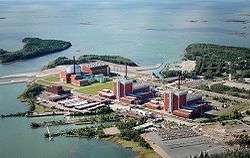
The free and largely privately owned financial and physical Nordic energy markets traded in NASDAQ OMX Commodities Europe and Nord Pool Spot exchanges, have provided competitive prices compared with other EU countries. As of 2007, Finland has roughly the lowest industrial electricity prices in the EU-15 (equal to France).[128]
In 2006, the energy market was around 90 terawatt hours and the peak demand around 15 gigawatts in winter. This means that the energy consumption per capita is around 7.2 tons of oil equivalent per year. Industry and construction consumed 51% of total consumption, a relatively high figure reflecting Finland's industries.[129][130] Finland's hydrocarbon resources are limited to peat and wood. About 10–15% of the electricity is produced by hydropower,[131] which is low compared with more mountainous Sweden or Norway. In 2008, renewable energy (mainly hydropower and various forms of wood energy) was high at 31% compared with the EU average of 10.3% in final energy consumption.[132] Russia supplies more than 75% of Finland's oil imports and 100% of total gas imports.[133][134]

Finland has four privately owned nuclear reactors producing 18% of the country's energy[136] and one research reactor (decommissioned 2018 [137]) at the Otaniemi campus. The fifth AREVA-Siemens-built reactor – the world's largest at 1600 MWe and a focal point of Europe's nuclear industry – has faced many delays and is currently scheduled to be operational by 2018–2020, a decade after the original planned opening.[138] A varying amount (5–17%) of electricity has been imported from Russia (at around 3 gigawatt power line capacity), Sweden and Norway.
The Onkalo spent nuclear fuel repository is currently under construction at the Olkiluoto Nuclear Power Plant in the municipality of Eurajoki, on the west coast of Finland, by the company Posiva.[139] Energy companies are about to increase nuclear power production, as in July 2010 the Finnish parliament granted permits for additional two new reactors.
Transport
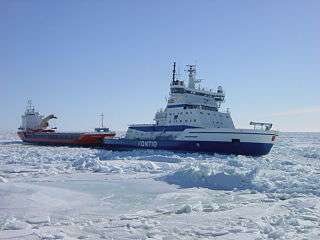
Finland’s road system is utilized by most internal cargo and passenger traffic. The annual state operated road network expenditure of around €1 billion is paid for with vehicle and fuel taxes which amount to around €1.5 billion and €1 billion, respectively.
The main international passenger gateway is Helsinki Airport, which handled about 17 million passengers in 2016. Oulu Airport is the second largest, whilst another 25 airports have scheduled passenger services. The Helsinki Airport-based Finnair, Blue1, and Nordic Regional Airlines, Norwegian Air Shuttle sell air services both domestically and internationally. Helsinki has an optimal location for great circle (i.e. the shortest and most efficient) routes between Western Europe and the Far East.
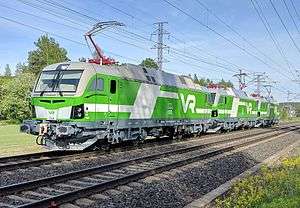
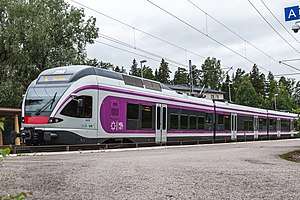
Despite having a low population density, the Government annually spends around €350 million to maintain the 5,865-kilometre-long (3,644 mi) network of railway tracks. Rail transport is handled by the state owned VR Group, which has a 5% passenger market share (out of which 80% are from urban trips in Greater Helsinki) and 25% cargo market share.[141] Since 12 December 2010, Karelian Trains, a joint venture between Russian Railways and VR Group, has been running Alstom Pendolino operated high-speed services between Saint Petersburg's Finlyandsky and Helsinki's Central railway stations. These services are branded as "Allegro" trains. The journey from Helsinki to Saint Petersburg takes only three and a half hours. A high-speed rail line is planned between Helsinki and Turku, with a line from the capital to Tampere also proposed.[142] Helsinki opened the world's northernmost metro system in 1982, which also serves the neighbouring city of Espoo since 2017.
The majority of international cargo shipments are handled at ports. Vuosaari Harbour in Helsinki is the largest container port in Finland; others include Kotka, Hamina, Hanko, Pori, Rauma, and Oulu. There is passenger traffic from Helsinki and Turku, which have ferry connections to Tallinn, Mariehamn, Stockholm and Travemünde. The Helsinki-Tallinn route – one of the busiest passenger sea routes in the world – has also been served by a helicopter line, and the Helsinki-Tallinn Tunnel has been proposed to provide railway services between the two cities.[143]
Industry
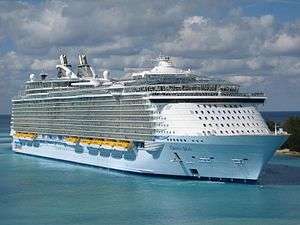
Finland rapidly industrialized after World War II, achieving GDP per capita levels comparable to that of Japan or the UK in the beginning of the 1970s. Initially, most of the economic development was based on two broad groups of export-led industries, the "metal industry" (metalliteollisuus) and "forest industry" (metsäteollisuus). The "metal industry" includes shipbuilding, metalworking, the automotive industry, engineered products such as motors and electronics, and production of metals and alloys including steel, copper and chromium. Many of the world's biggest cruise ships, including MS Freedom of the Seas and the Oasis of the Seas have been built in Finnish shipyards.[144] [145] The "forest industry" includes forestry, timber, pulp and paper, and is often considered a logical development based on Finland's extensive forest resources, as 73% of the area is covered by forest. In the pulp and paper industry, many major companies are based in Finland; Ahlstrom-Munksjö, Metsä Board, and UPM are all Finnish forest-based companies with revenues exceeding €1 billion. However, in recent decades, the Finnish economy has diversified, with companies expanding into fields such as electronics (Nokia), metrology (Vaisala), petroleum (Neste), and video games (Rovio Entertainment), and is no longer dominated by the two sectors of metal and forest industry. Likewise, the structure has changed, with the service sector growing, with manufacturing declining in importance; agriculture remains a minor part. Despite this, production for export is still more prominent than in Western Europe, thus making Finland possibly more vulnerable to global economic trends.
In 2017, the Finnish economy was estimated to consist of approximately 2.7% agriculture, 28.2% manufacturing and 69.1% services.[146] In 2019, the per-capita income of Finland was estimated to be $48,869. In 2020, Finland was ranked 20th on the ease of doing business index, among 190 jurisdictions.
Public policy
Finnish politicians have often emulated other Nordics and the Nordic model.[147] Nordics have been free-trading and relatively welcoming to skilled migrants for over a century, though in Finland immigration is relatively new. The level of protection in commodity trade has been low, except for agricultural products.[147]
Finland has top levels of economic freedom in many areas. Finland is ranked 16th in the 2008 global Index of Economic Freedom and 9th in Europe.[148] While the manufacturing sector is thriving, the OECD points out that the service sector would benefit substantially from policy improvements.[149]
The 2007 IMD World Competitiveness Yearbook ranked Finland 17th most competitive.[150] The World Economic Forum 2008 index ranked Finland the 6th most competitive.[151] In both indicators, Finland's performance was next to Germany, and significantly higher than most European countries. In the Business competitiveness index 2007–2008 Finland ranked third in the world.
Economists attribute much growth to reforms in the product markets. According to the OECD, only four EU-15 countries have less regulated product markets (UK, Ireland, Denmark and Sweden) and only one has less regulated financial markets (Denmark). Nordic countries were pioneers in liberalizing energy, postal, and other markets in Europe.[147] The legal system is clear and business bureaucracy less than most countries.[148] Property rights are well protected and contractual agreements are strictly honoured.[148] Finland is rated the least corrupt country in the world in the Corruption Perceptions Index[152] and 13th in the Ease of doing business index. This indicates exceptional ease in cross-border trading (5th), contract enforcement (7th), business closure (5th), tax payment (83rd), and low worker hardship (127th).[153]
Finnish law forces all workers to obey the national contracts that are drafted every few years for each profession and seniority level. The agreement becomes universally enforceable provided that more than 50% of the employees support it, in practice by being a member of a relevant trade union. The unionization rate is high (70%), especially in the middle class (AKAVA—80%). A lack of a national agreement in an industry is considered an exception.[111][147]
Tourism
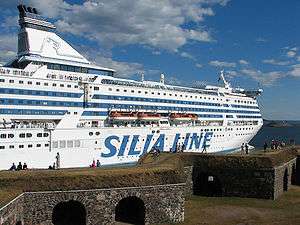
In 2017, tourism in Finland grossed approximately €15.0 billion with a 7% increase from the previous year. Of this, €4.6 billion (30%) came from foreign tourism.[154] In 2017, there were 15.2 million overnight stays of domestic tourists and 6.7 million overnight stays of foreign tourists.[155] Much of the sudden growth can be attributed to the globalisation of the country as well as a rise in positive publicity and awareness. While Russia remains the largest market for foreign tourists, the biggest growth came from Chinese markets (35%).[155] Tourism contributes roughly 2.7% to Finland's GDP, making it comparable to agriculture and forestry.[156]
Commercial cruises between major coastal and port cities in the Baltic region, including Helsinki, Turku, Tallinn, Stockholm, and Travemünde, play a significant role in the local tourism industry. By passenger counts, the Port of Helsinki is the busiest port in the world.[157]
Lapland has the highest tourism consumption of any Finnish region.[156] Above the Arctic Circle, in midwinter, there is a polar night, a period when the sun does not rise for days or weeks, or even months, and correspondingly, midnight sun in the summer, with no sunset even at midnight (for up to 73 consecutive days, at the northernmost point). Lapland is so far north that the aurora borealis, fluorescence in the high atmosphere due to solar wind, is seen regularly in the fall, winter, and spring. Finnish Lapland is also locally regarded as the home of Saint Nicholas or Santa Claus, with several theme parks, such as Santa Claus Village and Santa Park in Rovaniemi.[158]
Tourist attractions in Finland include the natural landscape found throughout the country as well as urban attractions. Finland is covered with thick pine forests, rolling hills, and lakes. Finland contains 40 national parks, from the Southern shores of the Gulf of Finland to the high fells of Lapland. Outdoor activities range from Nordic skiing, golf, fishing, yachting, lake cruises, hiking, and kayaking, among many others. Bird-watching is popular for those fond of avifauna, however hunting is also popular. Elk and hare are common game in Finland. Finland also has urbanised regions with many cultural events and activities. Tourist attractions in Helsinki include the Helsinki Cathedral and the Suomenlinna sea fortress. Olavinlinna in Savonlinna hosts the annual Savonlinna Opera Festival.
Demographics
The population of Finland is currently about 5.5 million inhabitants and is aging with the birth rate at 10.42 births per 1,000 population per year, or a fertility rate of 1.49 children born per woman,[161] one of the lowest in the world, below the replacement rate of 2.1, it remains considerably below the high of 5.17 children born per woman in 1887.[162] Finland subsequently has one of the oldest populations in the world, with the average age of 42.6 years.[163] Approximately half of voters are estimated to be over 50 years old.[164][60][165][22] Finland has an average population density of 18 inhabitants per square kilometre. This is the third-lowest population density of any European country, behind those of Norway and Iceland, and the lowest population density in the EU. Finland's population has always been concentrated in the southern parts of the country, a phenomenon that became even more pronounced during 20th-century urbanisation. Two of the three largest cities in Finland are situated in the Greater Helsinki metropolitan area—Helsinki and Espoo. Tampere holds the third place while also Helsinki-neighbouring Vantaa is the fourth. Other cities with population over 100,000 are Turku, Oulu, Jyväskylä, Kuopio, and Lahti.
As of 2018, there were 402,619 people with a foreign background living in Finland (7.3% of the population), most of whom are from Russia, Estonia, Somalia, Iraq and former Yugoslavia.[166] The children of foreigners are not automatically given Finnish citizenship, as Finnish nationality law practices and maintain jus sanguinis policy where only children born to at least one Finnish parent are granted citizenship. If they are born in Finland and cannot get citizenship of any other country, they become citizens.[167] Additionally, certain persons of Finnish descent who reside in countries that were once part of Soviet Union, retain the right of return, a right to establish permanent residency in the country, which would eventually entitle them to qualify for citizenship.[168] 387,215 people in Finland in 2018 were born in another country, representing 7% of the population. The 10 largest foreign born groups are (in order) from Russia, Estonia, Sweden, Iraq, Somalia, China, Thailand, Serbia, Vietnam and Turkey.[169]
The immigrant population is growing. By 2035, the three largest cites in Finland are projected to have a foreign speaking population percentage of over a quarter each, with Helsinki rising to 26%, Espoo to 30% and Vantaa to 34%. The Helsinki region alone will have 437,000 foreign speakers, up by 236,000.[170]
Language
.svg.png)
Finnish and Swedish are the official languages of Finland. Finnish predominates nationwide while Swedish is spoken in some coastal areas in the west and south and in the autonomous region of Åland. The native language of 87.3% of the population is Finnish,[172][173] which is part of the Finnic subgroup of the Uralic languages. The language is one of only four official EU languages not of Indo-European origin. Finnish is closely related to Karelian and Estonian and more remotely to the Sami languages and Hungarian. Swedish is the native language of 5.2% of the population (Swedish-speaking Finns).[174]
The Nordic languages and Karelian are also specially treated in some contexts.
Finnish Romani is spoken by some 5,000–6,000 people; it and Finnish Sign Language are also recognized in the constitution. There are two sign languages: Finnish Sign Language, spoken natively by 4,000–5,000 people,[175] and Finland-Swedish Sign Language, spoken natively by about 150 people. Tatar is spoken by a Finnish Tatar minority of about 800 people whose ancestors moved to Finland mainly during Russian rule from the 1870s to the 1920s.[176]
The Sami language has an official language status in the north, in Lapland or in northern Lapland, where the Sami people predominate, numbering around 7,000[177] and recognized as an indigenous people. About a quarter of them speak a Sami language as their mother tongue.[178] The Sami languages that are spoken in Finland are Northern Sami, Inari Sami, and Skolt Sami.[note 2]
The rights of minority groups (in particular Sami, Swedish speakers, and Romani people) are protected by the constitution.[179]
The largest immigrant languages are Russian (1.4%), Estonian (0.9%), Arabic (0.5%), Somali (0.4%) and English (0.4%).[174] English is studied by most pupils as a compulsory subject from the first grade (at seven years of age) in the comprehensive school (in some schools other languages can be chosen instead).[180][181] German, French, Spanish and Russian can be studied as second foreign languages from the fourth grade (at 10 years of age; some schools may offer other options).[182]
93% of Finns can speak a second language.[183] The figures in this section should be treated with caution, as they come from the official Finnish population register. People can only register one language and so bilingual or multilingual language users' language competencies are not properly included. A citizen of Finland that speaks bilingually Finnish and Swedish will often be registered as a Finnish only speaker in this system. Similarly "old domestic language" is a category applied to some languages and not others for political not linguistic reasons, for example Russian.[184]
Largest cities
Religion
Religions in Finland (2019)[185]
With 3.9 million members,[186] the Evangelical Lutheran Church of Finland is one of the largest Lutheran churches in the world and is also by far Finland's largest religious body; at the end of 2019, 68.7% of Finns were members of the church.[187] The Evangelical Lutheran Church of Finland sees its share of the country's population declining by roughly one percent annually in recent years.[187] The decline has been due to both church membership resignations and falling baptism rates.[188][189] The second largest group, accounting for 26.3% of the population[187] in 2017, has no religious affiliation. The irreligious group rose quickly from just below 13% in the year 2000. A small minority belongs to the Finnish Orthodox Church (1.1%). Other Protestant denominations and the Roman Catholic Church are significantly smaller, as are the Jewish and other non-Christian communities (totalling 1.6%). The Pew Research Center estimated the Muslim population at 2.7% in 2016.[190] The main Lutheran and Orthodox churches are national churches of Finland with special roles such as in state ceremonies and schools.[191]
In 1869, Finland was the first Nordic country to disestablish its Evangelical Lutheran church by introducing the Church Act, followed by the Church of Sweden in 2000. Although the church still maintains a special relationship with the state, it is not described as a state religion in the Finnish Constitution or other laws passed by the Finnish Parliament.[192] Finland's state church was the Church of Sweden until 1809. As an autonomous Grand Duchy under Russia 1809–1917, Finland retained the Lutheran State Church system, and a state church separate from Sweden, later named the Evangelical Lutheran Church of Finland, was established. It was detached from the state as a separate judicial entity when the new church law came to force in 1869. After Finland had gained independence in 1917, religious freedom was declared in the constitution of 1919 and a separate law on religious freedom in 1922. Through this arrangement, the Evangelical Lutheran Church of Finland lost its position as a state church but gained a constitutional status as a national church alongside the Finnish Orthodox Church, whose position however is not codified in the constitution.
In 2016, 69.3% of Finnish children were baptized[193] and 82.3% were confirmed in 2012 at the age of 15,[194] and over 90% of the funerals are Christian. However, the majority of Lutherans attend church only for special occasions like Christmas ceremonies, weddings, and funerals. The Lutheran Church estimates that approximately 1.8% of its members attend church services weekly.[195] The average number of church visits per year by church members is approximately two.[196]
According to a 2010 Eurobarometer poll, 33% of Finnish citizens responded that "they believe there is a God"; 42% answered that "they believe there is some sort of spirit or life force"; and 22% that "they do not believe there is any sort of spirit, God, or life force".[197] According to ISSP survey data (2008), 8% consider themselves "highly religious", and 31% "moderately religious". In the same survey, 28% reported themselves as "agnostic" and 29% as "non-religious".[198]
Health
Life expectancy has increased from 71 years for men and 79 years for women in 1990 to 79 years for men and 84 years for women in 2017.[199] The under-five mortality rate has decreased from 51 per 1,000 live births in 1950 to 2.3 per 1,000 live births in 2017 ranking Finland's rate among the lowest in the world.[200] The fertility rate in 2014 stood at 1.71 children born/per woman and has been below the replacement rate of 2.1 since 1969.[201] With a low birth rate women also become mothers at a later age, the mean age at first live birth being 28.6 in 2014.[201] A 2011 study published in The Lancet medical journal found that Finland had the lowest stillbirth rate out of 193 countries, including the UK, France and New Zealand.[202]
There has been a slight increase or no change in welfare and health inequalities between population groups in the 21st century. Lifestyle-related diseases are on the rise. More than half a million Finns suffer from diabetes, type 1 diabetes being globally the most common in Finland. Many children are diagnosed with type 2 diabetes. The number of musculoskeletal diseases and cancers are increasing, although the cancer prognosis has improved. Allergies and dementia are also growing health problems in Finland. One of the most common reasons for work disability are due to mental disorders, in particular depression.[203] Treatment for depression has improved and as a result the historically high suicide rates have declined to 13 per 100 000 in 2017, closer to the North European average.[204] Suicide rates are still among the highest among developed countries in the OECD.[205]
There are 307 residents for each doctor.[206] About 19% of health care is funded directly by households and 77% by taxation.
In April 2012, Finland was ranked 2nd in Gross National Happiness in a report published by The Earth Institute.[207] Since 2012, Finland has every time ranked at least in the top 5 of world's happiest countries in the annual World Happiness Report by the United Nations,[208][209][210] as well as ranking as the happiest country in 2018.[211]
Education and science
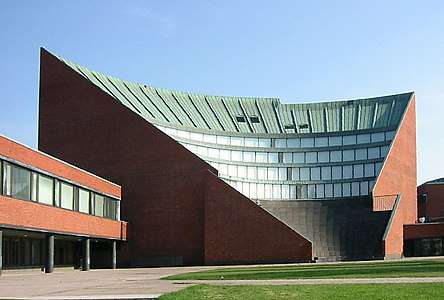
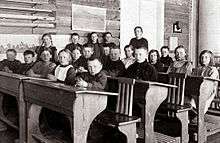
Most pre-tertiary education is arranged at municipal level. Even though many or most schools were started as private schools, today only around 3 percent of students are enrolled in private schools (mostly specialist language and international schools), much less than in Sweden and most other developed countries.[212] Pre-school education is rare compared with other EU countries and formal education is usually started at the age of 7. Primary school takes normally six years and lower secondary school three years. Most schools are managed by municipal officials.
The flexible curriculum is set by the Ministry of Education and the Education Board. Education is compulsory between the ages of 7 and 16. After lower secondary school, graduates may either enter the workforce directly, or apply to trade schools or gymnasiums (upper secondary schools). Trade schools offer a vocational education: approximately 40% of an age group choose this path after the lower secondary school.[213] Academically oriented gymnasiums have higher entrance requirements and specifically prepare for Abitur and tertiary education. Graduation from either formally qualifies for tertiary education.
In tertiary education, two mostly separate and non-interoperating sectors are found: the profession-oriented polytechnics and the research-oriented universities. Education is free and living expenses are to a large extent financed by the government through student benefits. There are 15 universities and 24 Universities of Applied Sciences (UAS) in the country.[214][215] The University of Helsinki is ranked 75th in the Top University Ranking of 2010.[216] The World Economic Forum ranks Finland's tertiary education No. 1 in the world.[217] Around 33% of residents have a tertiary degree, similar to Nordics and more than in most other OECD countries except Canada (44%), United States (38%) and Japan (37%).[218] The proportion of foreign students is 3% of all tertiary enrollments, one of the lowest in OECD, while in advanced programs it is 7.3%, still below OECD average 16.5%.[219]
More than 30% of tertiary graduates are in science-related fields. Forest improvement, materials research, environmental sciences, neural networks, low-temperature physics, brain research, biotechnology, genetic technology, and communications showcase fields of study where Finnish researchers have had a significant impact.[220]
Finland has a long tradition of adult education, and by the 1980s nearly one million Finns were receiving some kind of instruction each year. Forty percent of them did so for professional reasons. Adult education appeared in a number of forms, such as secondary evening schools, civic and workers' institutes, study centres, vocational course centres, and folk high schools. Study centres allowed groups to follow study plans of their own making, with educational and financial assistance provided by the state. Folk high schools are a distinctly Nordic institution. Originating in Denmark in the 19th century, folk high schools became common throughout the region. Adults of all ages could stay at them for several weeks and take courses in subjects that ranged from handicrafts to economics.[93]
Finland is highly productive in scientific research. In 2005, Finland had the fourth most scientific publications per capita of the OECD countries.[221] In 2007, 1,801 patents were filed in Finland.[222]
In addition, 38 percent of Finland's population has a university or college degree, which is among the highest percentages in the world.[223][224]
In 2010 a new law was enacted considering the universities, which defined that there are 16 of them as they were excluded from the public sector to be autonomous legal and financial entities, however enjoying special status in the legislation.[225] As result many former state institutions were driven to collect funding from private sector contributions and partnerships. The change caused deep rooted discussions among the academic circles.[226]
English language is important in Finnish education. There are a number of degree programs that are taught in English, which attracts thousands of degree and exchange students every year.
In December 2017 the OECD reported that Finnish fathers spend an average of eight minutes a day more with their school-aged children than mothers do.[227][228]
Culture
Literature

Written Finnish could be said to have existed since Mikael Agricola translated the New Testament into Finnish during the Protestant Reformation, but few notable works of literature were written until the 19th century and the beginning of a Finnish national Romantic Movement. This prompted Elias Lönnrot to collect Finnish and Karelian folk poetry and arrange and publish them as the Kalevala, the Finnish national epic. The era saw a rise of poets and novelists who wrote in Finnish, notably Aleksis Kivi, Eino Leino and Johannes Linnankoski. Many writers of the national awakening wrote in Swedish, such as the national poet Johan Ludvig Runeberg and Zachris Topelius.
After Finland became independent, there was a rise of modernist writers, most famously the Finnish-speaking Mika Waltari and Swedish-speaking Edith Södergran. Frans Eemil Sillanpää was awarded the Nobel Prize in Literature in 1939. World War II prompted a return to more national interests in comparison to a more international line of thought, characterized by Väinö Linna. Besides Kalevala and Waltari, the Swedish-speaking Tove Jansson is the most translated Finnish writer. Popular modern writers include Arto Paasilinna, Ilkka Remes, Kari Hotakainen, Sofi Oksanen, and Jari Tervo, while the best novel is annually awarded the prestigious Finlandia Prize.
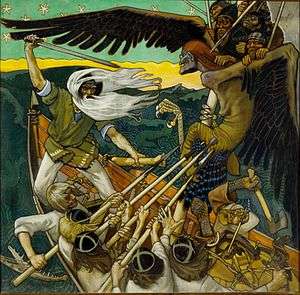
Visual arts, design, and architecture
The visual arts in Finland started to form their individual characteristics in the 19th century, when Romantic nationalism was rising in autonomic Finland. The best known of Finnish painters, Akseli Gallen-Kallela, started painting in a naturalist style, but moved to national romanticism. Finland's best-known sculptor of the 20th century was Wäinö Aaltonen, remembered for his monumental busts and sculptures. Finns have made major contributions to handicrafts and industrial design: among the internationally renowned figures are Timo Sarpaneva, Tapio Wirkkala and Ilmari Tapiovaara. Finnish architecture is famous around the world, and has contributed significantly to several styles internationally, such as Jugendstil (or Art Nouveau), Nordic Classicism and Functionalism. Among the top 20th-century Finnish architects to gain international recognition are Eliel Saarinen and his son Eero Saarinen. Architect Alvar Aalto is regarded as among the most important 20th-century designers in the world;[229] he helped bring functionalist architecture to Finland, but soon was a pioneer in its development towards an organic style.[230] Aalto is also famous for his work in furniture, lamps, textiles and glassware, which were usually incorporated into his buildings.
Music
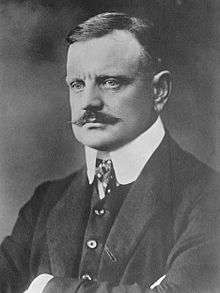
- Classical
Much of Finland's classical music is influenced by traditional Karelian melodies and lyrics, as comprised in the Kalevala. Karelian culture is perceived as the purest expression of the Finnic myths and beliefs, less influenced by Germanic influence than the Nordic folk dance music that largely replaced the kalevaic tradition. Finnish folk music has undergone a roots revival in recent decades, and has become a part of popular music.
The people of northern Finland, Sweden, and Norway, the Sami, are known primarily for highly spiritual songs called joik. The same word sometimes refers to lavlu or vuelie songs, though this is technically incorrect.
The first Finnish opera was written by the German-born composer Fredrik Pacius in 1852. Pacius also wrote the music to the poem Maamme/Vårt land (Our Country), Finland's national anthem. In the 1890s Finnish nationalism based on the Kalevala spread, and Jean Sibelius became famous for his vocal symphony Kullervo. He soon received a grant to study runo singers in Karelia and continued his rise as the first prominent Finnish musician. In 1899 he composed Finlandia, which played its important role in Finland gaining independence. He remains one of Finland's most popular national figures and is a symbol of the nation.
Today, Finland has a very lively classical music scene and many of Finland's important composers are still alive, such as Magnus Lindberg, Kaija Saariaho, Kalevi Aho, and Aulis Sallinen. The composers are accompanied by a large number of great conductors such as Esa-Pekka Salonen, Osmo Vänskä, Jukka-Pekka Saraste, and Leif Segerstam. Some of the internationally acclaimed Finnish classical musicians are Karita Mattila, Soile Isokoski, Pekka Kuusisto, Olli Mustonen, and Linda Lampenius.
- Modern
Iskelmä (coined directly from the German word Schlager, meaning "hit") is a traditional Finnish word for a light popular song. Finnish popular music also includes various kinds of dance music; tango, a style of Argentine music, is also popular. The light music in Swedish-speaking areas has more influences from Sweden. Modern Finnish popular music includes a number of prominent rock bands, jazz musicians, hip hop performers, dance music acts, etc.
During the early 1960s, the first significant wave of Finnish rock groups emerged, playing instrumental rock inspired by groups such as The Shadows. Around 1964, Beatlemania arrived in Finland, resulting in further development of the local rock scene. During the late 1960s and '70s, Finnish rock musicians increasingly wrote their own music instead of translating international hits into Finnish. During the decade, some progressive rock groups such as Tasavallan Presidentti and Wigwam gained respect abroad but failed to make a commercial breakthrough outside Finland. This was also the fate of the rock and roll group Hurriganes. The Finnish punk scene produced some internationally acknowledged names including Terveet Kädet in the 1980s. Hanoi Rocks was a pioneering 1980s glam rock act that inspired the American hard rock group Guns N' Roses, among others.[231]
Many Finnish metal bands have gained international recognition. HIM and Nightwish are some of Finland's most internationally known bands. HIM's 2005 album Dark Light went gold in the United States. Apocalyptica are an internationally famous Finnish group who are most renowned for mixing strings-led classical music with classic heavy metal. Other well-known metal bands are Amorphis, Children of Bodom, Ensiferum, Finntroll, Impaled Nazarene, Insomnium, Korpiklaani, Moonsorrow, Reverend Bizarre, Sentenced, Sonata Arctica, Stratovarius, Swallow the Sun, Turisas, Waltari, and Wintersun.[232]
After Finnish hard rock/heavy metal band Lordi won the 2006 Eurovision Song Contest, Finland hosted the competition in 2007.[233] Alternative rock band Poets of the Fall, formed in 2003, have released eight studio albums and have toured widely.[234]
Cinema and television
In the film industry, notable directors include Aki Kaurismäki, Mauritz Stiller, Spede Pasanen, and Hollywood film director and producer Renny Harlin. Around twelve feature films are made each year.[235]
Finland's most internationally successful TV shows are the backpacking travel documentary series Madventures and the reality TV show The Dudesons, about four childhood friends who perform stunts and play pranks on each other (in similar vein to the American TV show Jackass).
Media and communications
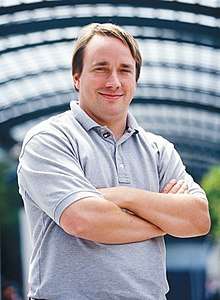
Thanks to its emphasis on transparency and equal rights, Finland's press has been rated the freest in the world.[236]
Today, there are around 200 newspapers, 320 popular magazines, 2,100 professional magazines, 67 commercial radio stations, three digital radio channels and one nationwide and five national public service radio channels.
Each year, around 12,000 book titles are published and 12 million records are sold.[235]
Sanoma publishes the newspaper Helsingin Sanomat (its circulation of 412,000[237] making it the largest), the tabloid Ilta-Sanomat, the commerce-oriented Taloussanomat and the television channel Nelonen. The other major publisher Alma Media publishes over thirty magazines, including the newspaper Aamulehti, tabloid Iltalehti and commerce-oriented Kauppalehti. Worldwide, Finns, along with other Nordic peoples and the Japanese, spend the most time reading newspapers.[238]
Yle, the Finnish Broadcasting Company, operates five television channels and thirteen radio channels in both national languages. Yle is funded through a mandatory television license and fees for private broadcasters. All TV channels are broadcast digitally, both terrestrially and on cable. The commercial television channel MTV3 and commercial radio channel Radio Nova are owned by Nordic Broadcasting (Bonnier and Proventus Industrier).
In regards to telecommunication infrastructure, Finland is the highest ranked country in the World Economic Forum's Network Readiness Index (NRI) – an indicator for determining the development level of a country's information and communication technologies. Finland ranked 1st overall in the 2014 NRI ranking, unchanged from the year before.[239] This is shown in its penetration throughout the country's population. Around 79% of the population use the Internet.[240] Finland had around 1.52 million broadband Internet connections by the end of June 2007 or around 287 per 1,000 inhabitants.[241] All Finnish schools and public libraries have Internet connections and computers and most residents have a mobile phone. Value-added services are rare.[242] In October 2009, Finland's Ministry of Transport and Communications committed to ensuring that every person in Finland would be able to access the Internet at a minimum speed of one megabit-per-second beginning July 2010.[243]
Cuisine

Finnish cuisine is notable for generally combining traditional country fare and haute cuisine with contemporary style cooking. Fish and meat play a prominent role in traditional Finnish dishes from the western part of the country, while the dishes from the eastern part have traditionally included various vegetables and mushrooms. Refugees from Karelia contributed to foods in eastern Finland.
Finnish foods often use wholemeal products (rye, barley, oats) and berries (such as bilberries, lingonberries, cloudberries, and sea buckthorn). Milk and its derivatives like buttermilk are commonly used as food, drink, or in various recipes. Various turnips were common in traditional cooking, but were replaced with the potato after its introduction in the 18th century.
According to the statistics, red meat consumption has risen, but still Finns eat less beef than many other nations, and more fish and poultry. This is mainly because of the high cost of meat in Finland.
Finland has the world's highest per capita consumption of coffee.[244] Milk consumption is also high, at an average of about 112 litres (25 imp gal; 30 US gal), per person, per year,[245] even though 17% of the Finns are lactose intolerant.[246]
Public holidays
All official holidays in Finland are established by Acts of Parliament. Christian holidays include Christmas, New Year's Day, Epiphany, Easter, Ascension Day, Pentecost, Midsummer Day (St. John's Day), and All Saints' Day, while secular holidays include May Day, Independence Day, New Year's Day, and Midsummer. Christmas is the most extensively celebrated, and at least 24 to 26 December is taken as a holiday.
Sports
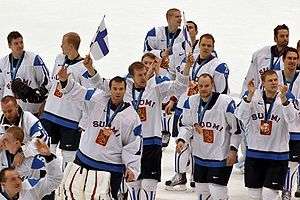

Various sporting events are popular in Finland. Pesäpallo, resembling baseball, is the national sport of Finland, although the most popular sports in terms of spectators is ice hockey. Ice Hockey World Championships 2016 final Finland-Canada, 69% of Finnish people watched that game on TV.[247] Other popular sports include athletics, cross-country skiing, ski jumping, football, volleyball and basketball.[248] While ice hockey is the most popular sports when it comes to attendance at games, association football is the most played team sport in terms of the number of players in the country and is also the most appreciated sport in Finland.[249][250]
In terms of medals and gold medals won per capita, Finland is the best performing country in Olympic history.[251] Finland first participated as a nation in its own right at the Olympic Games in 1908, while still an autonomous Grand Duchy within the Russian Empire. At the 1912 Summer Olympics, great pride was taken in the three gold medals won by the original "Flying Finn" Hannes Kolehmainen.
Finland was one of the most successful countries at the Olympic Games before World War II. At the 1924 Summer Olympics, Finland, a nation then of only 3.2 million people, came second in the medal count. In the 1920s and '30s, Finnish long-distance runners dominated the Olympics, with Paavo Nurmi winning a total of nine Olympic gold medals between 1920 and 1928 and setting 22 official world records between 1921 and 1931. Nurmi is often considered the greatest Finnish sportsman and one of the greatest athletes of all time.
For over 100 years, Finnish male and female athletes have consistently excelled at the javelin throw. The event has brought Finland nine Olympic gold medals, five world championships, five European championships, and 24 world records.
In addition to Kolehmainen and Nurmi, some of Finland's most internationally well-known and successful sportspeople are long-distance runners Ville Ritola and Lasse Virén; ski-jumpers Matti Nykänen and Janne Ahonen; cross-country skiers Veikko Hakulinen, Eero Mäntyranta, Marja-Liisa Kirvesniemi and Mika Myllylä; rower Pertti Karppinen; gymnast Heikki Savolainen; professional skateboarder Arto Saari; ice hockey players Kimmo Timonen, Jari Kurri, Teemu Selänne, and Saku Koivu; football players Jari Litmanen and Sami Hyypiä; basketball player Hanno Möttölä; alpine skiers Kalle Palander and Tanja Poutiainen; Formula One world champions Keke Rosberg, Mika Häkkinen and Kimi Räikkönen; four-time World Rally champions Juha Kankkunen and Tommi Mäkinen; and 13-time World Enduro Champion Juha Salminen, seven-time champion Kari Tiainen, and the five-time champions Mika Ahola, biathlete Kaisa Mäkäräinen and Samuli Aro. Finland is also one of the most successful nations in bandy, being the only nation beside Russia and Sweden to win a Bandy World Championship.
The 1952 Summer Olympics were held in Helsinki. Other notable sporting events held in Finland include the 1983 and 2005 World Championships in Athletics.
Finland also has a notable history in figure skating. Finnish skaters have won 8 world championships and 13 junior world cups in synchronized skating, and Finland is considered one of the best countries at the sport.
Some of the most popular recreational sports and activities include floorball, Nordic walking, running, cycling, and skiing (alpine skiing, cross-country skiing, and ski jumping). Floorball, in terms of registered players, occupies third place after football and ice hockey. According to the Finnish Floorball Federation, floorball is the most popular school, youth, club and workplace sport.[252] As of 2016, the total number of licensed players reaches 57,400.[253]
Especially since the 2014 FIBA Basketball World Cup, Finland's national basketball team has received widespread public attention. More than 8,000 Finns travelled to Spain to support their team. Overall, they chartered more than 40 airplanes.[254]
Notes
- "Republic of Finland", or Suomen tasavalta in Finnish, Republiken Finland in Swedish, and Suoma dásseváldi in Sami, is the long protocol name, which is however not defined by law. Legislation recognises only the short name.
- The names for Finland in its Sami languages are: Suopma (Northern Sami), Suomâ (Inari Sami) and Lää'ddjânnam (Skolt Sami). See Geonames.de.
References
- Formerly a semi-presidential republic, it is now a parliamentary republic according to David Arter, First Chair of Politics at Aberdeen University. In his "Scandinavian Politics Today" (Manchester University Press, revised 2008 ISBN 9780719078538), he quotes Nousiainen, Jaakko (June 2001). "From semi-presidentialism to parliamentary government: political and constitutional developments in Finland". Scandinavian Political Studies. 24 (2): 95–109. doi:10.1111/1467-9477.00048.CS1 maint: ref=harv (link) as follows: "There are hardly any grounds for the epithet 'semi-presidential'." Arter's own conclusions are only slightly more nuanced: "The adoption of a new constitution on 1 March 2000 meant that Finland was no longer a case of semi-presidential government other than in the minimalist sense of a situation where a popularly elected fixed-term president exists alongside a prime minister and cabinet who are responsible to parliament (Elgie 2004: 317)". According to the Finnish Constitution, the president has no possibility to rule the government without the ministerial approval, and does not have the power to dissolve the parliament under his or her own desire. Finland is actually represented by its prime minister, and not by its president, in the Council of the Heads of State and Government of the European Union. The 2012 constitutional amendments reduced the powers of the president even further.
- "Finland's preliminary population figure 5,528,737 at the end of April". Statistics Finland. Retrieved 1 June 2020.
- "Report for Selected Countries and Subjects". IMF. 17 October 2018.
- "Gini coefficient of equivalised disposable income - EU-SILC survey". ec.europa.eu. Eurostat. Retrieved 27 March 2020.
- "Human Development Report 2019" (PDF). United Nations Development Programme. 10 December 2019. Retrieved 10 December 2019.
- Ajanilmaukset Archived 2017-10-20 at the Wayback Machine Kielikello 2/2006. Institute for the Languages of Finland. Retrieved 2017-10-20
- Georg Haggren; Petri Halinen; Mika Lavento; Sami Raninen; Anna Wessman (2015). Muinaisuutemme jäljet. Helsinki: Gaudeamus. p. 23. ISBN 978-952-495-363-4.
- Georg Haggren; Petri Halinen; Mika Lavento; Sami Raninen; Anna Wessman (2015). Muinaisuutemme jäljet. Helsinki: Gaudeamus. p. 339. ISBN 9789524953634.
- Parliament of Finland. "History of the Finnish Parliament". eduskunta.fi. Archived from the original on 6 December 2015.
- Finland was the first nation in the world to give all (adult) citizens full suffrage, in other words the right to vote and to run for office, in 1906. New Zealand was the first country in the world to grant all (adult) citizens the right to vote, in 1893. But women did not get the right to run for the New Zealand legislature, until 1919.
- "Finland". International Monetary Fund. Retrieved 17 April 2013.
- "Finland: World Audit Democracy Profile". WorldAudit.org. Archived from the original on 30 October 2013.
- "Tertiary education graduation rates—Education: Key Tables from OECD". OECD iLibrary. 14 June 2010. doi:10.1787/20755120-table1. Archived from the original on 30 April 2011. Retrieved 6 March 2011. Cite journal requires
|journal=(help) - "Her er verdens mest konkurransedyktige land—Makro og politikk". E24.no. 9 September 2010. Archived from the original on 14 October 2010. Retrieved 6 March 2011.
- "The 2009 Legatum Prosperity Index". Prosperity.com. Archived from the original on 29 October 2009. Retrieved 4 February 2010.
- "Human Capital Report 2015". World Economic Forum. Retrieved 15 May 2015.
- "Fragile States Index 2016". Fundforpeace.org. Archived from the original on 4 February 2017. Retrieved 27 November 2016.
- Gender Gap Report (PDF). WEF.
- Hetter, Katia (26 March 2019). "This is the world's happiest country in 2019". CNN. Retrieved 31 March 2019.
- Helliwell, John F.; Sachs, Jeffrey; De Neve, Jan-Emmanuel, eds. (2020). "World Happiness Report 2020" (PDF). New York: Sustainable Development Solutions Network. Retrieved 30 April 2020.
- Relations with Finland. NATO (13 January 2016)
- "Finland in Figures: Population" (in Finnish). Population Register Centre. 27 March 2014. Retrieved 1 April 2014.
- "Kotisivu - Kuntaliiton Kunnat.net" (in Finnish). Suomen Kuntaliitto. Retrieved 6 May 2015.
- "International Religious Freedom Report 2004". U.S. Department of State. 15 September 2004. Retrieved 22 January 2007.
- "National Archives Service, Finland (in English)". Retrieved 22 January 2007.
- kotikielenseura.fi, SUOMI (TTAVIA ETYMOLOGIOITA).
- "Annesl Regni Francorum". www.thelatinlibrary.com. Retrieved 29 July 2018.
- Heikkilä, Mikko K. (2017). Keskiajan suomen kielen dokumentoitu sanasto ensiesiintymisvuosineen. Mediapinta. p. 44. ISBN 978-952-236-859-1.
- Salo, Unto (2004). Suomen museo 2003: "The Origins of Finland and Häme". Helsinki: Suomen muinaismuistoyhdistys. p. 55. ISBN 978-951-9057-55-2.
- Lindberg, Johan (26 May 2016). "Finlands historia: 1700-talet". Uppslagsverket Finland (in Swedish). Retrieved 30 November 2017.
- Georg Haggren; Petri Halinen; Mika Lavento; Sami Raninen; Anna Wessman (2015). Muinaisuutemme jäljet. Helsinki: Gaudeamus. p. 21. ISBN 9789524953634.
- Herkules.oulu.fi. People, material, culture and environment in the north. Proceedings of the 22nd Nordic Archaeological Conference, University of Oulu, 18–23 August 2004 Edited by Vesa-Pekka Herva Gummerus Kirjapaino
- Dr. Pirjo Uino of the National Board of Antiquities, ThisisFinland—"Prehistory: The ice recedes—man arrives". Retrieved 24 June 2008.
- History of Finland and the Finnish People from stone age to WWII. Retrieved 24 June 2008.
- Professor Frank Horn of the Northern Institute for Environmental and Minority Law University of Lappland writing for Virtual Finland on National Minorities of Finland. Retrieved 24 June 2008.
- Georg Haggren; Petri Halinen; Mika Lavento; Sami Raninen; Anna Wessman (2015). Muinaisuutemme jäljet. Helsinki: Gaudeamus. pp. 199, 210–211.
- Georg Haggren; Petri Halinen; Mika Lavento; Sami Raninen; Anna Wessman (2015). Muinaisuutemme jäljet. Helsinki: Gaudeamus. pp. 171–178.
- Georg Haggren; Petri Halinen; Mika Lavento; Sami Raninen; Anna Wessman (2015). Muinaisuutemme jäljet. Helsinki: Gaudeamus. pp. 189–190.
- Georg Haggren; Petri Halinen; Mika Lavento; Sami Raninen; Anna Wessman (2015). Muinaisuutemme jäljet. Helsinki: Gaudeamus. pp. 332, 364–365.
- Georg Haggren; Petri Halinen; Mika Lavento; Sami Raninen; Anna Wessman (2015). Muinaisuutemme jäljet. Helsinki: Gaudeamus. p. 269.
- Georg Haggren; Petri Halinen; Mika Lavento; Sami Raninen; Anna Wessman (2015). Muinaisuutemme jäljet. Helsinki: Gaudeamus. pp. 211–212.
- Georg Haggren; Petri Halinen; Mika Lavento; Sami Raninen; Anna Wessman (2015). Muinaisuutemme jäljet. Helsinki: Gaudeamus. p. 380.
- Tarkiainen, Kari (2010). Ruotsin itämaa. Helsinki: Svenska litteratursällskapet i Finland. p. 88.
- Compiled by Martti Linna (1989). Suomen varhaiskeskiajan lähteitä. Historian aitta. p. 69.
- Tarkiainen, Kari (2010). Ruotsin itämaa. Helsinki: Svenska litteratursällskapet i Finland. pp. 104–147. ISBN 9789515832122.
- Tarkiainen, Kari (2010). Ruotsin itämaa. Porvoo: Svenska litteratursällskapet i Finland. pp. 167–170. ISBN 9789515832122.
- Kemiläinen, Aira (2004). Kansallinen identiteetti Ruotsissa ja Suomessa 1600-1700-luvuilla (in Finnish). Tieteessä tapahtuu 8/2004. pp. 25–26.
- "History of Finland. Finland chronology". Europe-cities.com. Archived from the original on 27 April 2011. Retrieved 26 August 2010.
- "Finland and the Swedish Empire". Federal Research Division, Library of Congress.
- Nordstrom, Byron J. (2000). Scandinavia Since 1500. Minneapolis, US: University of Minnesota Press. p. 143. ISBN 978-0-8166-2098-2.
- "Pioneers in Karelia - Pekka Halonen". Google Arts & Culture.
- "Growth and Equity in Finland" (PDF). World Bank.
- Mickelsson, Rauli (2007). Suomen puolueet—Historia, muutos ja nykypäivä. Vastapaino.
- The Finnish Civil War, Federal Research Division of the Library of Congress. Countrystudies.us. Retrieved on 18 May 2016.
- "A Country Study: Finland—The Finnish Civil War". Federal Research Division, Library of Congress. Retrieved 11 December 2008.
- Finland 1917–2007 (20 February 2007). "From slash-and-burn fields to post-industrial society—90 years of change in industrial structure". Stat.fi. Retrieved 26 August 2010.
- Michael Jones (2013). "Leningrad: State of Siege". Basic Books. p. 38. ISBN 0786721774
- Hidden help from across the Atlantic Archived 29 January 2007 at the Wayback Machine, Helsingin Sanomat
- Finland 1917–2007 (5 December 2007). "Population development in independent Finland—greying Baby Boomers". Stat.fi. Retrieved 26 August 2010.
- formin.finland.fi Archived 5 January 2016 at the Wayback Machine; Suurlähettiläs Jaakko Blomberg: Kylmän sodan päättyminen, Suomi ja Viro – Ulkoasiainministeriö: Ajankohtaista. Retrieved on 18 May 2016.
- Uusitalo, Hannu (October 1996), Economic Crisis and Social Policy in Finland in the 1990s (PDF), SPRC Discussion Paper No. 70, ISSN 1037-2741
- "Statistics Finland, Environment and Natural Resources". Retrieved 4 April 2013.
- "Trends in sea level variability". Finnish Institute of Marine Research. 24 August 2004. Archived from the original on 27 February 2007. Retrieved 22 January 2007.
- "Finland." Encyclopædia Britannica. Encyclopædia Britannica Ultimate Reference Suite. Chicago: Encyclopædia Britannica, 2011.
- "Euroopan metsäisin maa". Luke (in Finnish). 2013. Retrieved 30 April 2016.
- "Nutritional and genetic adaptation of galliform birds: implications for hand-rearing and restocking". Oulu University Library (2000). Retrieved 23 May 2008.
- "BirdLife Finland". BirdLife International (2004) Birds in Europe: population estimates, trends and conservation status. Cambridge, UK. (BirdLife Conservation Series No. 12). Retrieved 22 January 2007.
- "Saimaa Ringed Seal". Retrieved 22 December 2018.
- "SOS: Save our seals". this is Finland (Ministry for Foreign Affairs of Finland). Archived from the original on 10 September 2015.
- "Finland's climate". Finnish Meteorological Institute. Archived from the original on 21 July 2010. Retrieved 3 December 2012.
- "The climate in Finland (finnish)". Retrieved 3 January 2015.
- Havas, Paavo. "Pohjoiset alueet / yleiskuvaus" (in Finnish). Retrieved 3 December 2012.
- "Finland's Northern Conditions: Challenges and Opportunities for Agriculture" (PDF). Ministry of Agriculture and Forestry, Finland. pp. 1–4. Archived from the original (PDF) on 7 April 2012. Retrieved 3 December 2012.
- "Tervetuloa aluehallintoviraston verkkosivuille!" (in Finnish). State Provincial Office. Archived from the original on 15 March 2012. Retrieved 9 June 2012.
- "Suomen hallintorakenteeseen ja maakuntauudistukseen liittyviä termejä sekä maakuntien ja kuntien nimet fi-sv-en-(ru)" (PDF). vnk.fi. pp. 8–9. Retrieved 23 August 2019.
- The role that the regional councils serve on Mainland Finland are on the Åland Islands handled by the autonomous Government of Åland.
- "Valtioneuvosto päätti Uudenmaan ja Itä-Uudenmaan maakuntien yhdistämisestä" (in Finnish). Ministry of Finance. 22 October 2009. Archived from the original on 7 August 2011. Retrieved 30 December 2010.
- "Suomen virallinen tilasto (SVT): Väestön ennakkotilasto [verkkojulkaisu]. Tammikuu 2019" (in Finnish). Statistics Finland. Retrieved 15 March 2019.
- "Area of Finnish Municipalities 1.1.2018" (PDF). National Land Survey of Finland. Retrieved 30 January 2018.
- "https://yle.fi/uutiset/3-11392088". Yle. 9 June 2020. Retrieved 29 June 2020. External link in
|title=(help) - The source for historical information on party support is the Finnish Wikipedia's article on the parliament
- "Eduskuntavaalit 2015 – tulospalvelu – yle.fi". Yle. Retrieved 5 June 2015.
- The Finnish Wikipedia's article on Motion of no confidence
- Policing corruption, International Perspectives.
- "File:Intentional homicides, 2016 (police-recorded offences per 100 000 inhabitants).png". Retrieved 10 December 2010.
- The History of Corruption in Central Government By Seppo Tiihonen, International Institute of Administrative Sciences
- Vaalijohtaja: Vaalirahoituslain rikkominen melko yleistä YLE 15 May 2008
- Evaluation Report on Finland on Incriminations, Theme I, s. 21, GRECO 3–7.12.2007
- Finnish constitution, Section 93.
- "The Nobel Peace Prize 2008". The Nobel Foundation. Nobelprize.org. Retrieved 10 May 2009.
- "Finland's foreign policy idea" ("Suomen ulkopolitiikan idea"), Risto E. J. Penttilä, 2008.
- Text from PD source: US Library of Congress: A Country Study: Finland, Library of Congress Call Number DL1012 .A74 1990.
- Women's voluntary service Archived 9 April 2008 at the Wayback Machine (in Finnish)
- Työvoimakustannukset puuttuvat puolustusmenoista, Statistics Finland (in Finnish): Eurostat ranking is sixth, but the third when conscription is accounted.
- "European Union battlegroups". Finnish Defence Forces. Retrieved 27 May 2018.
- Chamberlain, Nigel (19 May 2014). "Is Finland taking a step closer to NATO membership" (PDF). NATO Watch. Retrieved 27 May 2018.</erf>
- MEMORANDUM OF UNDERSTANDING (MOU) BETWEEN THE GOVERNMENT OF THE REPUBLIC OF FINLAND AND HEADQUARTERS, SUPREME ALLIED COMMANDER TRANSFORMATION. NATO
- "Sweden and Finland Forge Closer Ties With NATO". Wall Street Journal.
- Finnish soldiers involved in 20-minute gunfight in Afghanistan |Yle Uutiset. yle.fi. Retrieved on 18 May 2016.
- Finland's participation in NATO-led crisis management operations. Ministry for Foreign Affairs of Finland
- Finland's participation in Mediterranean crisis management operation, Ukraine as well as Syria, Iraq and ISIL discussed by the President of the Republic and the Ministerial Committee on Foreign and Security Policy – Article – Valtioneuvoston kanslia. Vnk.fi (23 October 2015). Retrieved on 18 May 2016.
- Yemen kidnappers free Finnish couple, Austrian. Reuters (9 May 2013). Retrieved on 18 May 2016.
- yle.fi; "Tutkija Atte Kaleva: Jihadismi on tullut Suomeen jäädäkseen" |Yle Uutiset. Retrieved on 18 May 2016.
- yle.fi; Näin Ranskan avunpyyntö otettiin vastaan Suomessa – kooste tiistain vaiheista |Yle Uutiset. (17 November 2015). Retrieved on 18 May 2016.
- Amid Russia Tensions, Finland Calls Up 18,000 Reservists For Military Training. Ibtimes.com. Retrieved on 18 May 2016.
- "Finland in Figures—National Accounts". Statistics Finland. Retrieved 26 April 2007.
- "Finland in Figures—Manufacturing". Statistics Finland. Retrieved 26 April 2007.
- "Finland's 'lost decade' continues—economy same size as in 2006". yle.fi. 4 June 2015.
- "Finland's economy: In search of the sunny side". Financial Times. London. 11 March 2015.
- Finland Economy 2004, OECD
- "Finland - Trade Barriers | export.gov". www.export.gov. Retrieved 27 September 2019.
- Tehdyn työtunnin hinta 23–27 euroa, Statistics Finland
- "Suomalaisten tulot Euroopan keskitasoa. Hyvinvointipalvelut eivät paranna sijoitusta". Tilastokeskus.fi. 9 June 2008. Retrieved 26 August 2010.
- "Small enterprises grow faster than the big ones". Helsinkitimes.fi. 11 April 2008. Retrieved 26 August 2010.
- The Nordic Model of Welfare: A Historical Reappraisal, by Niels Finn Christiansen
- Mikkonen, Antti. "Sata suurinta työnantajaa: Nokia jäi kakkoseksi". Talouselämä.
- Finland in Figures (22 January 2015). "Statistics Finland: Labour Market". Tilastokeskus.fi. Retrieved 26 August 2010.
- . 6d.fi (19 January 2016). Retrieved on 21 July 2016.
- "OECD recommends Finland to do more to help older people stay in work". Oecd.org. 1 January 1970. Retrieved 26 August 2010.
- yle.fi; Suomessa on liki miljoona köyhää –"Heikoimmassa asemassa olevista on tullut muukalaisia" |Yle Uutiset. (28 August 2014). Retrieved on 18 May 2016.
- Finland in Figures. "Statistics Finland: Transport and Tourism". Tilastokeskus.fi. Retrieved 26 August 2010.
- Households' consumption (19 December 2007). "Own-account worker households' consumption has grown most in 2001–2006". Tilastokeskus.fi. Retrieved 26 August 2010.
- "Retail growth best in Finland for five years". For updates, see the Invest in Finland website.
- "Finland Economic Outlook". Retrieved 25 September 2018.
- "Archived copy". Archived from the original on 2 February 2019. Retrieved 1 February 2019.CS1 maint: archived copy as title (link)
- "Olkiluoto3 delayed till 2016". YLE. 11 February 2013. Retrieved 7 November 2013.
- Electricity prices—industrial users. Web.archive.org. Retrieved on 18 May 2016.
- Energy consumption (12 December 2007). "Statistics Finland". Stat.fi. Retrieved 26 August 2010.
- Energy consumption (12 December 2007). "Total energy consumption". Stat.fi. Retrieved 26 August 2010.
- "Metsävastaa: Vattenkraft" (in Swedish). Metsavastaa.net. Archived from the original on 3 March 2009. Retrieved 6 March 2011.
- "Europe's Energy Portal". energy.eu. Retrieved 17 February 2011.
- "EU imports of energy products - recent developments" (PDF). Eurostat. 4 July 2018. pp. 3–4.
- "Europe helps fund non-Russia gas line for Finland". United Press International. 10 August 2016.
- "Finland Energy supply". Statistics Finland. 20 April 2015. Retrieved 28 February 2015.
- "Energy Consumption in 2001" (PDF). Statistics Finland. Archived from the original (PDF) on 8 November 2006. Retrieved 22 January 2007.
- "FiR 1 -ydinreaktorin käytöstä poisto".
- Paula Nikula (28 February 2014). "Areva ajaa Olkiluodon työmaata alas" (in Finnish). Kauppalehti. Archived from the original on 4 March 2014. Retrieved 28 February 2014.
- "Journey deep into the Finnish caverns where nuclear waste will be buried for millenia". Wired. 24 April 2017.
- Transport and communications ministry—Rail. For year 2009 update: Finnish Railway Statistics 2010. For subsequent years when available: Finnish Railway Statistics. liikennevirasto.fi
- "Finland earmarks funds for new rail links between Helsinki, Turku and Tampere". Helsinki Times. 4 February 2019.
- Archived 2010-03-26 at the Wayback Machine, The busiest crossing.
- "Oasis of the Seas: Fast Facts" (PDF). OasisoftheSeas.com. 10 September 2009. Archived from the original (PDF) on 20 February 2012. Retrieved 24 October 2009.
- "Freedom of the Seas Fact Sheet - Royal Caribbean Press Center". www.royalcaribbeanpresscenter.com. Retrieved 16 June 2020.
- "Europe :: Finland — The World Factbook - Central Intelligence Agency". www.cia.gov. Retrieved 16 June 2020.
- The Nordic Model Archived 5 September 2012 at the Wayback Machine by Torben M. Andersen, Bengt Holmström, Seppo Honkapohja, Sixten Korkman, Hans Tson Söderström, Juhana Vartiainen
- "Finland economy". The Heritage Foundation. Archived from the original on 29 June 2011. Retrieved 26 August 2010.
- "Kilpailuvirasto.fi". Kilpailuvirasto.fi. 17 October 2005. Retrieved 26 August 2010.
- "World Competitiveness Yearbook 2007". Imd.ch. Archived from the original on 12 June 2007. Retrieved 26 August 2010.
- "The Global Competitiveness Report 2007–2008". World Economic Forum. Archived from the original on 19 June 2008. Retrieved 8 October 2008.
- "Corruption Perceptions Index 2012 – Results". Transparency.org. Archived from the original on 29 November 2013. Retrieved 12 December 2012.
- "Ranking of economies – Doing Business – World Bank Group". doingbusiness.org.
- Business Finland (2019). Matkailutilinpito: Matkailun talous- ja työllisyysvaikutukset 2016–2017 (PDF) (Report) (in Finnish). Business Finland, Visit Finland. Retrieved 2 April 2020.
- Ministry of Economic Affairs and Employment (Finland). "Finnish tourism in numbers". Retrieved 2 April 2020.
- Business Finland (2019). Tourism as Export Infographic 2019 (PDF) (Report). Business Finland, Visit Finland. Retrieved 2 April 2020.
- "Maritime ports freight and passenger statistics" (PDF). Eurostat. Retrieved 2 February 2020.
- "The Real Home of Santa Claus in Finland". Retrieved 20 November 2017.
- "Archived copy". Archived from the original on 12 February 2019. Retrieved 28 September 2018.CS1 maint: archived copy as title (link)
- "United Nations Population Division | Department of Economic and Social Affairs". un.org. Retrieved 29 June 2018.
- "PxWeb - Select table". pxnet2.stat.fi.
- Max Roser (2014), "Total Fertility Rate around the world over the last centuries", Our World In Data, Gapminder Foundation, archived from the original on 5 February 2019, retrieved 7 May 2019
- "World Factbook EUROPE : FINLAND", The World Factbook, 12 July 2018
- Tilastokeskus – Population. Stat.fi. Retrieved on 18 May 2016.
- "Median Age (Years)". GlobalHealthFacts.org. Archived from the original on 3 April 2013. Retrieved 22 March 2013.
- Statistics Finland. Retrieved 26 October 2018.
- Syntymäpaikan perusteella lapsi saa Suomen kansalaisuuden silloin, kun lapsi syntyy Suomessa eikä voi saada minkään vieraan valtion kansalaisuutta. Archived 28 August 2013 at the Wayback Machine
- "Finnish Directorate of Immigration". 10 November 2011. Archived from the original on 10 November 2011.
- "PxWeb - Select table". pxnet2.stat.fi.
- "Helsingin seudun vieraskielinen väestö yli kaksinkertaistuu vuoteen 2035 mennessä". Helsingin kaupunki.
- Tilastokeskus. "Languages". www.stat.fi.
- "Appendix table 2. Population according to language 1980–2015". Official Statistics of Finland (OSF): Population structure. Retrieved 27 November 2016.
- http://www.stat.fi/tup/julkaisut/tiedostot/julkaisuluettelo/yyti_fif_201900_2019_21461_net.pdf
- Statistics Finland, Population Retrieved on 18 October 2017.
- "Forskningscentralen för de inhemska språken—Teckenspråken i Finland" (in Swedish). Archived from the original on 18 March 2015.
- "National Minorities of Finland, The Tatars". Forum.hunturk.net. Retrieved 6 December 2011.
- According to the Finnish Population Registry Centre and the Finnish Sami parliament, the Sami population living in Finland was 7,371 in 2003. See Regional division of Sami people in Finland by age in 2003 (in Finnish).
- "The population of Finland in 2006". Statistics Finland. 31 December 2006. Retrieved 4 September 2007.
- "The Constitution of Finland, 17 § and 121 §" (PDF). FINLEX Data Bank. Retrieved 4 September 2007.
- Teivainen, Aleksi (13 April 2019). "Finland's first-graders to start learning foreign language in spring 2020". Helsinki Times. Retrieved 1 May 2019.
- Yang, Junyi (Spring 2018). Teachers' Role in Developing Healthy Self-esteem in Young Learners: A study of English language teachers in Finland (PDF) (Master’s Degree Program in Early Language Education for Intercultural Communication thesis). University of Eastern Finland.
- Nuolijärvi, Pirkko (Fall 2011). Language education policy and practice in Finland (PDF). European Federation of National Institutions for Language.
- "More than 90 percent of Finnish residents are at least bilingual". YLE. Retrieved 12 December 2018.
- "THE LANGUAGES OF FINLAND 1917–2017" (PDF). Lingsoft Language Library publications. Retrieved 15 December 2018.
- "Belonging to a religious community by age and sex, 2000-2019". Tilastokeskuksen PX-Web tietokannat. Government. Retrieved 1 April 2020. Note these are state religious registration numbers, people may be registered yet not practicing/believing and they may be believing/practicing but not registered.
- Seurakuntien jäsentilasto 2018 Evangelical Lutheran Church of Finland
- Population structure Statistics Finland
- Eroakirkosta.fi – Kirkosta eronnut tänä vuonna 40 000 ihmistä (in Finnish)
- Karjalainen – Kastettujen määrä romahtanut – kirkollisista ristiäisistä luopuu yhä useampi 13 June 2016 (in Finnish)
- "Muslim Population Growth in Europe". pewforum.org.
- Salla Korpela (May 2005). "The Church in Finland today". Finland Promotion Board; Produced by the Ministry for Foreign Affairs, Department for Communications and Culture. Retrieved 11 January 2011.
- Finland – Constitution, Section 76 The Church Act, http://servat.unibe.ch/icl/fi00000_.html.
- Lutheran church member statistics (2016) Archived 15 December 2018 at the Wayback Machine evl.fi
- Church statistical yesrbook 2012 Archived 20 March 2014 at the Wayback Machine The Evangelical Lutheran Church of Finland
- Church Attendance Falls; Religion Seen as Private 3 June 2012 YLE
- "International Religious Freedom Report 2004". U.S. Department of State. 15 September 2004. Retrieved 22 January 2007.
- "Special Eurobarometer Biotechnology" (PDF) (Fieldwork: January–February 2010 ed.). October 2010. p. 204. Archived from the original (PDF) on 15 December 2010. Retrieved 16 October 2012.
- Kimmo, Ketola et al. (2011). Uskonto suomalaisten elämässä. Tampereen yliopistopaino Oy . ISBN 978-951-44-8483-4
- "Finland in Figures 2018" (PDF). Finnish Population Centre. Retrieved 10 December 2018.
- "Trends in Under five Mortality Rate". UNICEF. Retrieved 10 December 2018.
- Statistics Finland – Births 2014. Stat.fi (14 April 2015). Retrieved on 18 May 2016.
- Lawn, Joy E.; Blencowe, Hannah; Pattinson, Robert; Cousens, Simon; Kumar, Rajesh; Ibiebele, Ibinabo; Gardosi, Jason; Day, Louise T.; Stanton, Cynthia (2011). "Stillbirths: Where? When? Why? How to make the data count?". The Lancet. 377 (9775): 1448–1463. doi:10.1016/S0140-6736(10)62187-3. hdl:2263/16343. PMID 21496911. Retrieved 6 December 2011.
- "Health care in Finland" (PDF). STM. Archived from the original (PDF) on 17 March 2015. Retrieved 6 September 2014.
- "Eurostat: Falling suicide rate in Finland nears European average". YLE. Retrieved 18 December 2018.
- "GHO | By category | Suicide rate estimates, age-standardized - Estimates by country". WHO. Retrieved 17 March 2020.
- "Health (2004)". Statistics Finland. Retrieved 22 January 2007.
- "World Happiness report". 2012. Retrieved 7 April 2012.
- "World Happiness Report 2017". Retrieved 22 May 2018.
- "World Happiness Report 2016 | Volume I (page 22)" (PDF). Retrieved 22 May 2018.
- "World Happiness Report 2012 (page 30)" (PDF). Retrieved 22 May 2018.
- "World Happiness Report 2018". 14 March 2018. Retrieved 21 May 2018.
- "Summary sheets on education systems in Europe" (PDF). Eurydice.org. Archived from the original (PDF) on 10 September 2008. Retrieved 26 August 2010.
- UNESCO-UNEVOC (18 November 2013). "Vocational Education in Finland". Retrieved 9 May 2014.
- "List of University in Finland". www.scholarshipsineurope.com. July 2017. Retrieved 4 August 2018.
- "Universities of Applied Sciences in Finland". www.studyinfinland.fi. Archived from the original on 8 August 2018. Retrieved 4 August 2018.
- "Top University Ranking of 2010: University of Helsinki". Archived from the original on 2 January 2010.
- World Economic Forum. "The Global Competitiveness Report 2013–2014" (PDF). p. 36. Retrieved 9 May 2014.
- "Tilastokeskus.fi". Tilastokeskus.fi. Retrieved 6 March 2011.
- "Education at Glance 2007: Finland" (PDF). OECD.
- Kari Sipilä. "A country that innovates". Virtual Finland. Ministry for Foreign Affairs / Department for Communication and Culture / Unit for Promotion and Publications / Embassy and Consulates General of Finland in China. Archived from the original on 7 July 2011.
- "Scientific publication—Finnish science and technology Information Service" (in Finnish). Research.fi. 15 November 2007. Archived from the original on 13 November 2013. Retrieved 3 August 2013.
- "Patents with numbers—Finnish science and technology Information Service" (in Finnish). Research.fi. 8 December 2009. Archived from the original on 11 October 2009. Retrieved 4 February 2010.
- Sauter, Michael B. (24 September 2012) The Most Educated Countries in the World Archived 20 August 2016 at the Wayback Machine. Finance.yahoo.com. Retrieved on 18 May 2016.
- And the World's Most Educated Country Is.... Newsfeed.time.com (27 September 2012). Retrieved on 18 May 2016.
- . finlex.fi; Yliopistolaki 558/2009 – Säädökset alkuperäisinä – FINLEX. Retrieved on 18 May 2016.
- Educational Schizophrenia in Finland |Teivo Teivainen. Teivo.net (8 August 2013). Retrieved on 18 May 2016.
- Bremner, Charles (9 December 2017). "Finland is the first country where fathers do most of the childcare". The Times. p. 51.
- "Finland: the only country where fathers spend more time with kids than mothers". The Guardian. 4 October 2017. Retrieved 23 December 2017.
- James Stevens Curl, Dictionary of Architecture, Grange Books, Rochester, 2005, p. 1.
- Sigfried Giedion, Space, Time and Architecture: The Growth of a New Tradition, Harvard University Press, Cambridge, Massachusetts, 2nd edition, 1949.
- Shah, Neil (15 April 2012). "Guns N' Roses Can Agree on at Least One Thing: This Finnish Saxophonist Rocks". The Wall Street Journal. Retrieved 19 November 2012.
- Patterson2016-05-17T10:14:00Z, Dayal. "10 of the best metal bands from Finland". Metal Hammer Magazine. Retrieved 11 December 2019.
- "Eurovision Song Contest 2007 Final | Eurovision Song Contest". Eurovision.tv. Retrieved 15 January 2017.
- "Poets of the Fall". Poets of the Fall. Archived from the original on 23 April 2012. Retrieved 27 April 2018.
- "Media moves". ThisisFINLAND (Ministry for Foreign Affairs of Finland). Archived from the original on 1 May 2011.
- 2010 Freedom of the Press Survey Archived 5 November 2011 at the Wayback Machine (retrieved 4 May 2011).
- "Circulation Statistics". The Finnish Audit Bureau of Circulations (Levikintarkastus Oy). Archived from the original on 1 June 2009. Retrieved 25 July 2009.
- "World Press Trends: Newspapers Still Reach More Than Internet". World Association of Newspapers and News Publishers. Retrieved 19 November 2012.
- "NRI Overall Ranking 2014" (PDF). World Economic Forum. Retrieved 28 June 2014.
- "Internet used by 79 per cent of the population at the beginning of 2007". Statistics Finland. Retrieved 22 December 2007.
- "Market Review 2/2007" (PDF). Finnish Communications Regulatory Authority (FICORA). 31 August 2007. Archived from the original (PDF) on 25 September 2007. Retrieved 4 September 2007.
- Information technology has become part of Finns' everyday life (Statistics Finland).
- "1Mb Broadband Access Becomes Legal Right". YLE. 14 October 2009. Retrieved 16 October 2009.
- "Google Fusion Tables". fusiontables.google.com.
- "What was eaten in Finland in 2017". Luonnonvarakeskus.
- "Odd Facts about Finland". edunation.co. 19 September 2017.
- "Leijonien MM-finaalista historian katsotuin jääkiekko-ottelu Suomessa!". mtv.fi. 23 May 2016. Retrieved 23 May 2016.
- Valta vaihtui urheilussa: Suomalaiset arvostavat nyt enemmän futista kuin jääkiekkoa |Jalkapallo |HS. Hs.fi (27 February 2014). Retrieved on 18 May 2016.
- Jalkapallo nousi arvostetuimmaksi urheilulajiksi |Yle Urheilu. yle.fi. Retrieved on 18 May 2016.
- (in Finnish) Jalkapallolla eniten harrastajia – se lyö lätkän, hiihto on alamäessä |Länsiväylä Archived 26 August 2018 at the Wayback Machine. Lansivayla.fi (28 February 2016). Retrieved on 18 May 2016.
- "Olympic Medals per Capita". www.medalspercapita.com.
- Finland, Stuart Allt Web Design, Turku. "Finnish Sports: Try the sports Finns love!". www.expat-finland.com.
- IFF. "IFF". www.floorball.org.
- FIBA (31 August 2014). "Fan power! Finn power! The tournament "begins" on a winning note for Dettman's team". FIBA.com. Retrieved 2 November 2014.
Further reading
- Chew, Allen F. The White Death: The Epic of the Soviet-Finnish Winter War (ISBN 0-87013-167-2).
- Engle, Eloise and Paananen, Pauri. The Winter War: The Soviet Attack on Finland 1939–1940 (ISBN 0-8117-2433-6).
- Insight Guide: Finland (ISBN 981-4120-39-1).
- Jakobson, Max. Finland in the New Europe (ISBN 0-275-96372-1).
- Jutikkala, Eino; Pirinen, Kauko. A History of Finland (ISBN 0-88029-260-1).
- Klinge, Matti. Let Us Be Finns: Essays on History (ISBN 951-1-11180-9).
- Lavery, Jason. The History of Finland, Greenwood Histories of the Modern Nations, Greenwood Press, 2006 (ISBN 0-313-32837-4, ISSN 1096-2905).
- Lewis, Richard D. Finland: Cultural Lone Wolf (ISBN 1-931930-18-X).
- Lonely Planet: Finland (ISBN 1-74059-791-5)
- Mann, Chris. Hitler's Arctic War: The German Campaigns in Norway, Finland, and the USSR 1940–1945 (ISBN 0-312-31100-1).
- Rusama, Jaakko. Ecumenical Growth in Finland (ISBN 951-693-239-8).
- Singleton, Fred. A Short History of Finland (ISBN 0-521-64701-0).
- Subrenat, Jean-Jacques. Listen, there's music from the forest; a brief presentation of the Kuhmo Chamber Music Festival (ISBN 952-92-0564-3).
- Swallow, Deborah. Culture Shock! Finland: A Guide to Customs and Etiquette (ISBN 1-55868-592-8).
- Trotter, William R. A Frozen Hell: The Russo-Finnish Winter War of 1939–1940 (ISBN 1-56512-249-6).
External links
- "Finland". The World Factbook. Central Intelligence Agency.
- Finland at Curlie
- Finland profile from the BBC News
- Key Development Forecasts for Finland from International Futures
- Population in Finland 1750–2010
- Appendix figure 2. The largest groups by native language 2001 and 2011 (Statistics Finland)
- Official statistical information about Finland from Findicator.
Government
- This is Finland, the official English-language online portal (administered by the Finnish Ministry for Foreign Affairs)
- Finland (University of Colorado Boulder Libraries Government Publications)
Maps


Travel

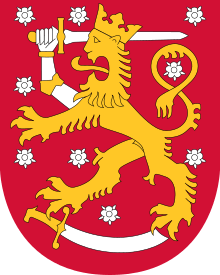
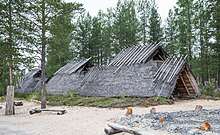
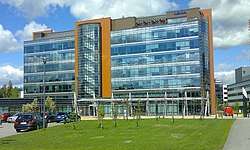
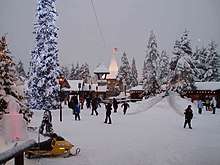
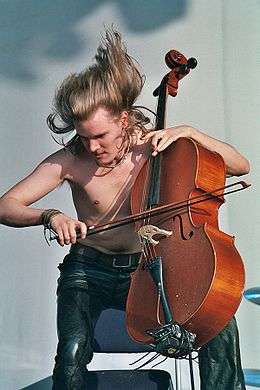
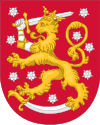
.svg.png)
